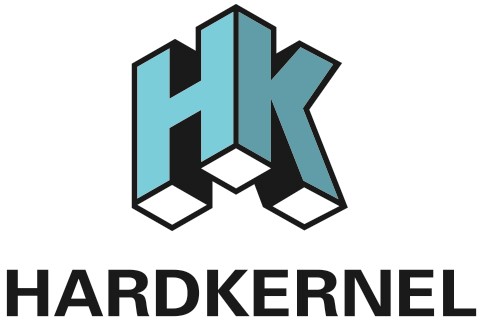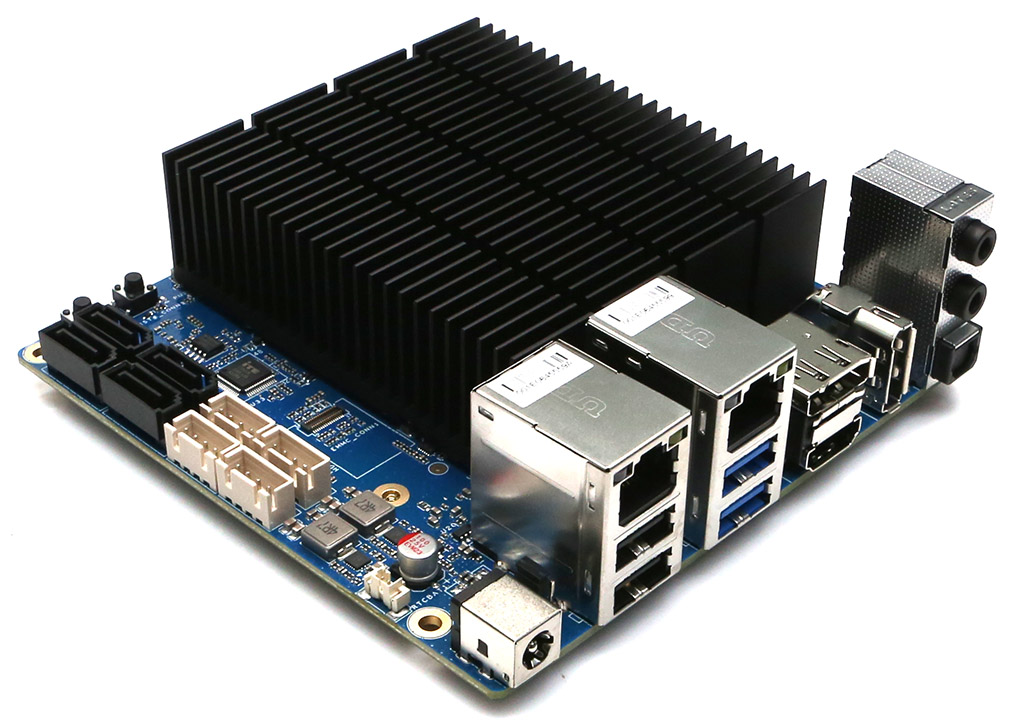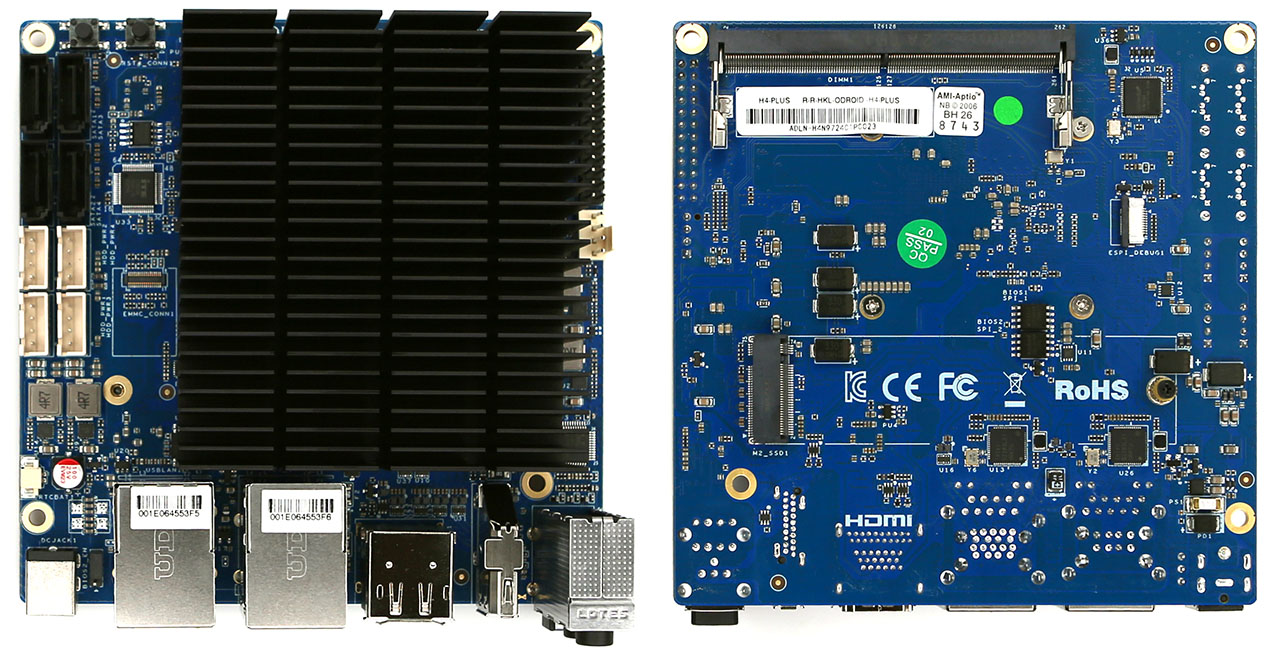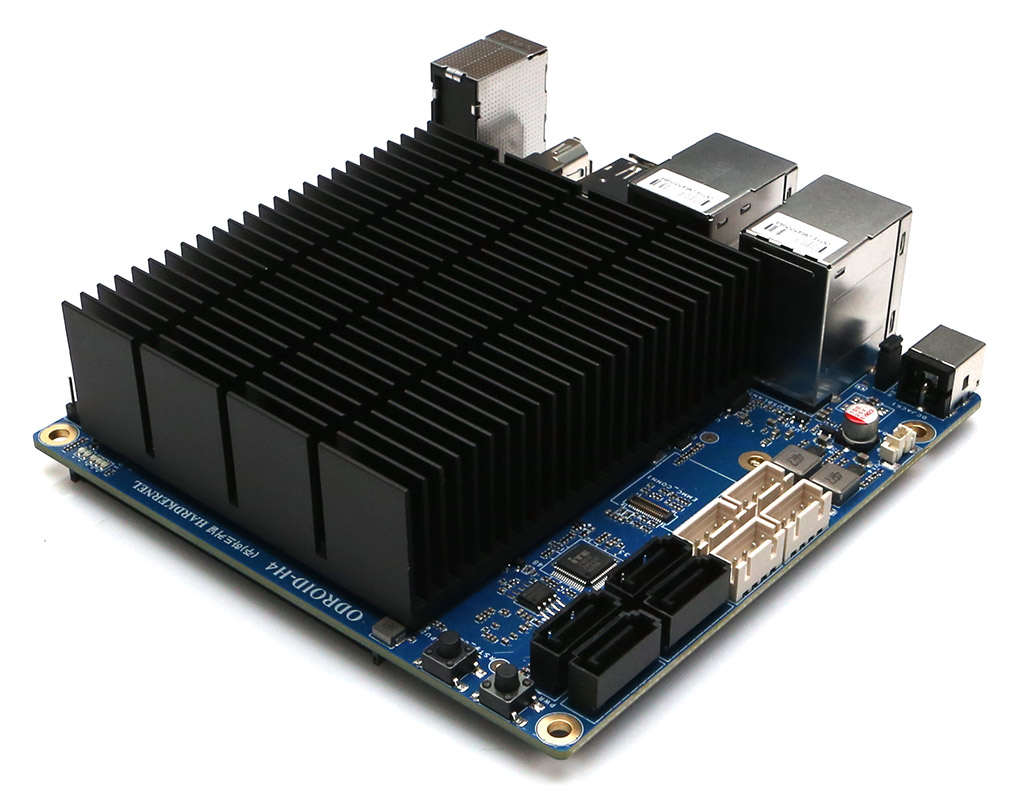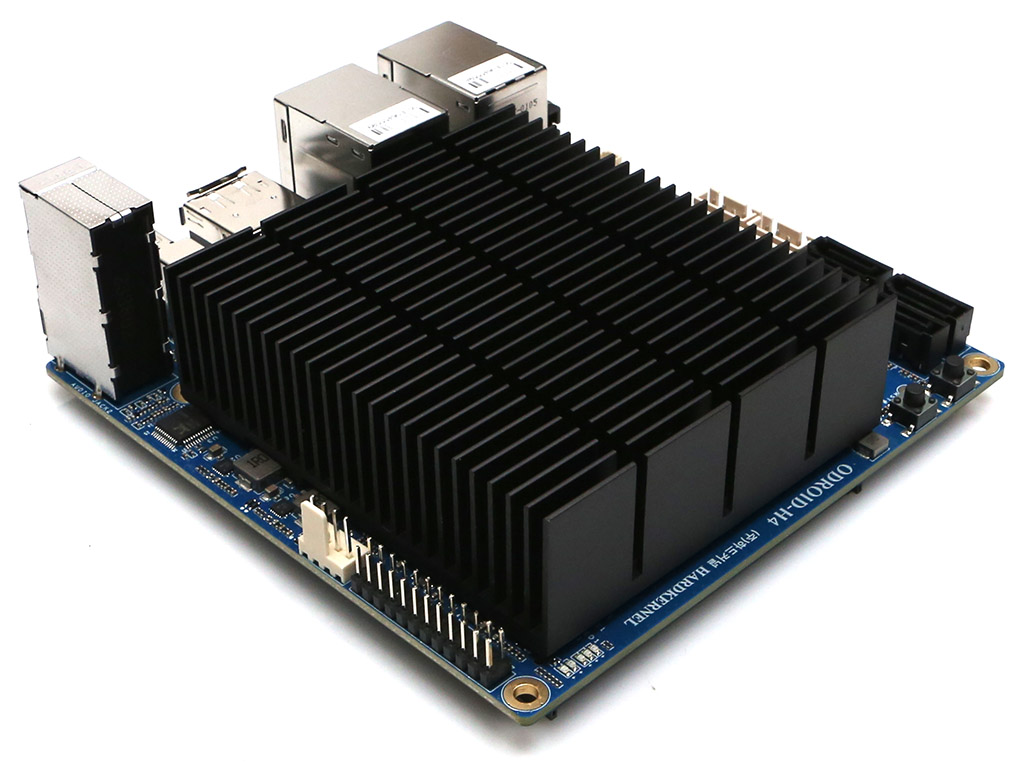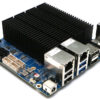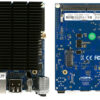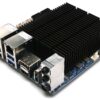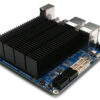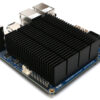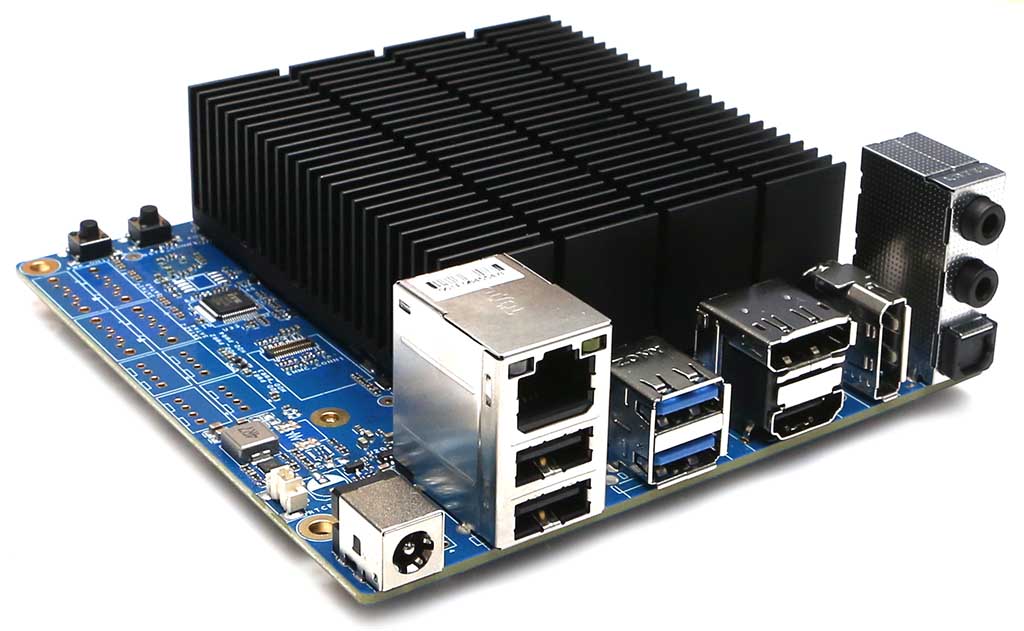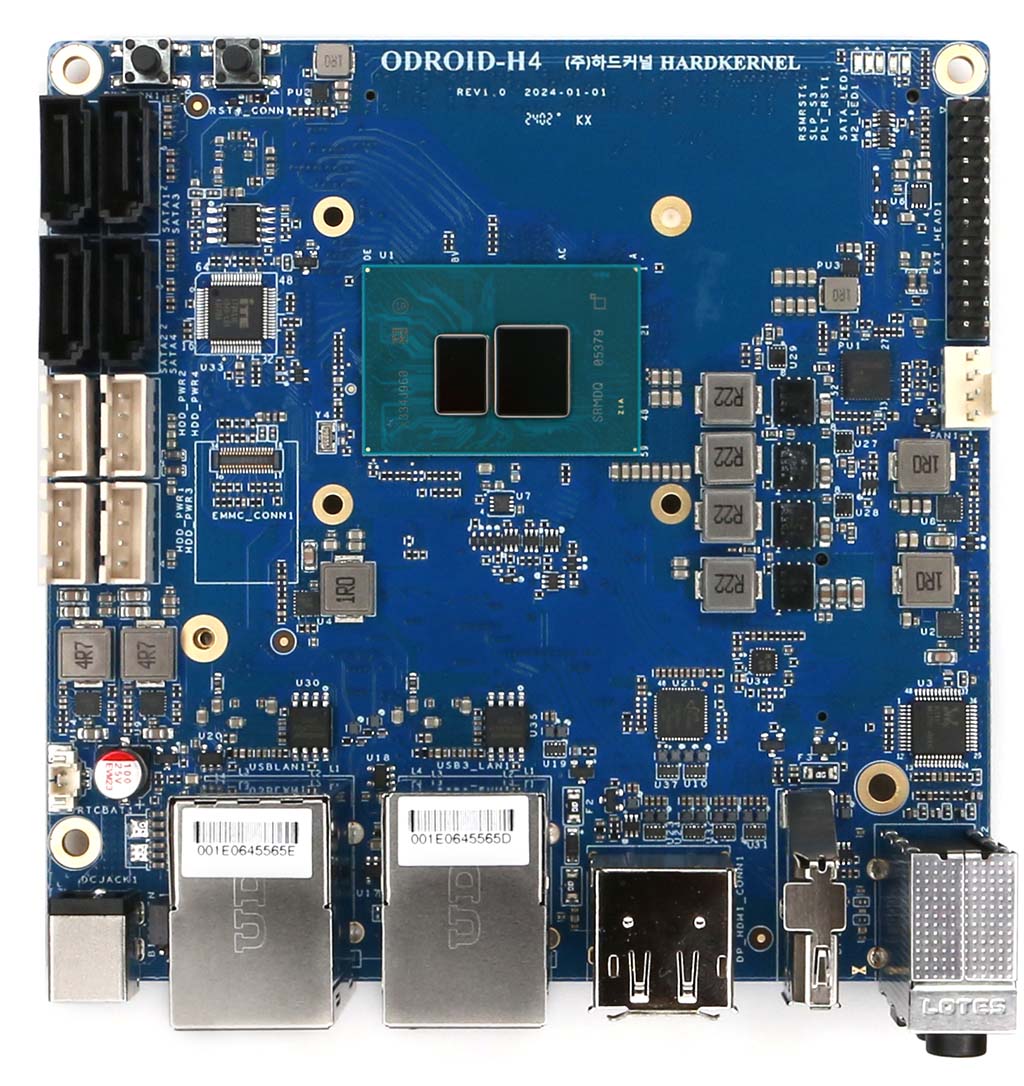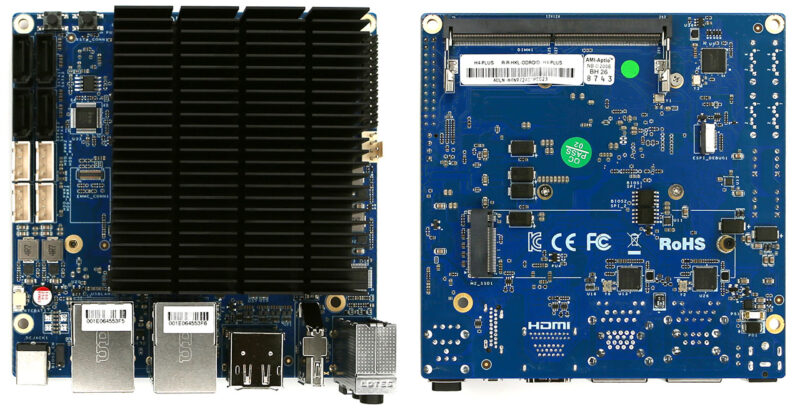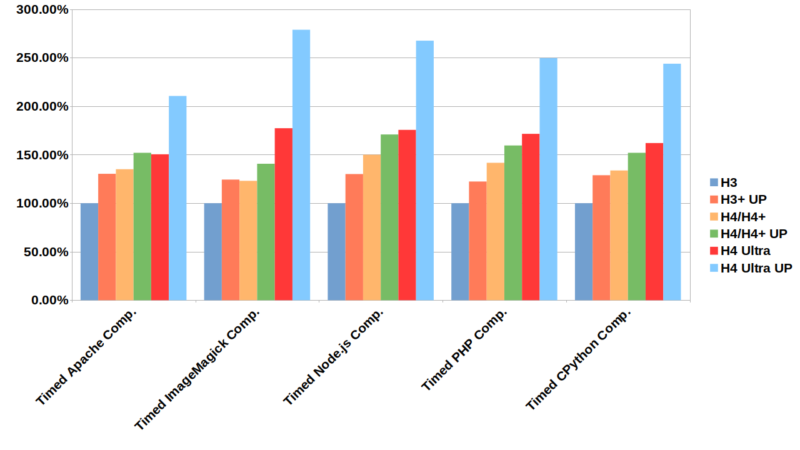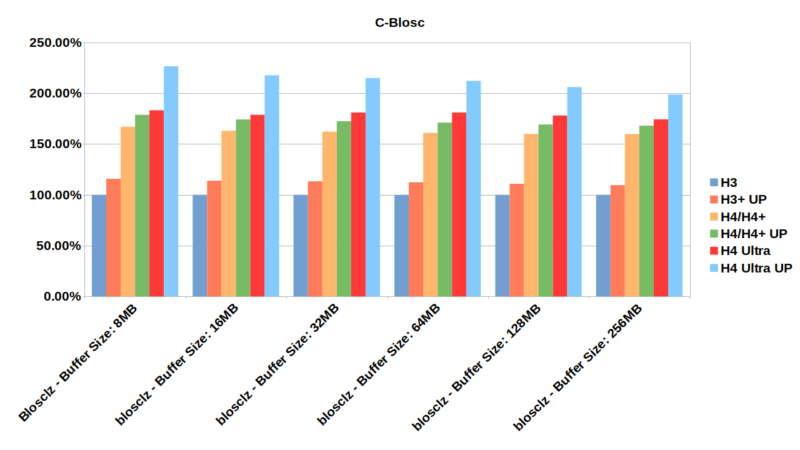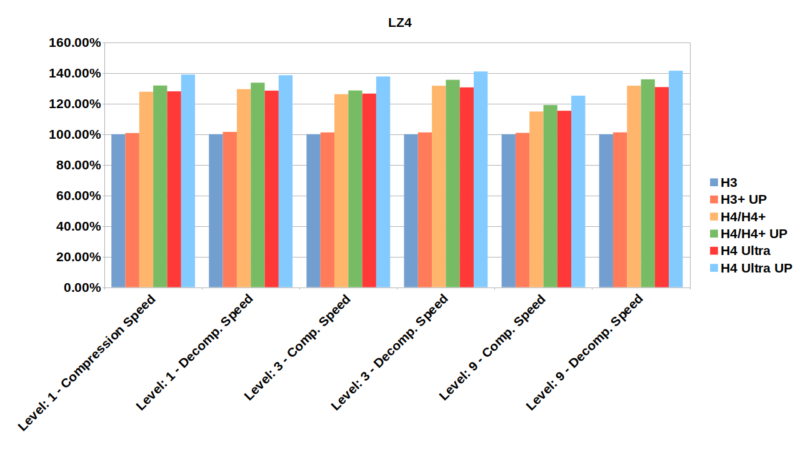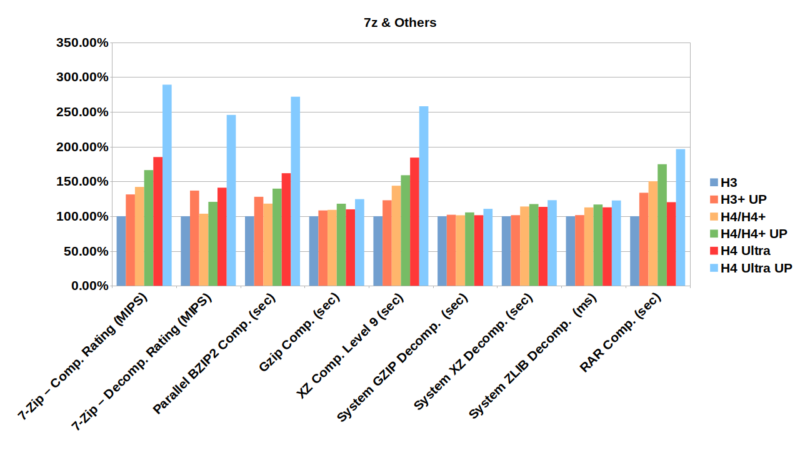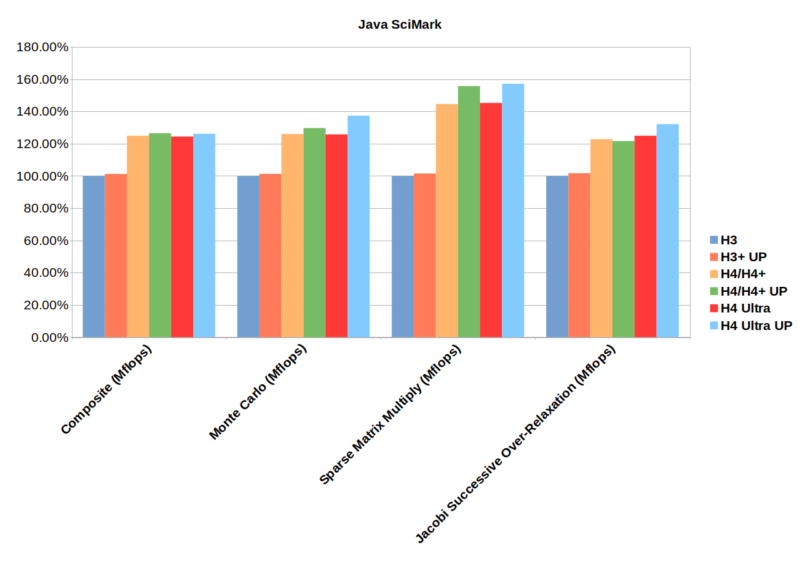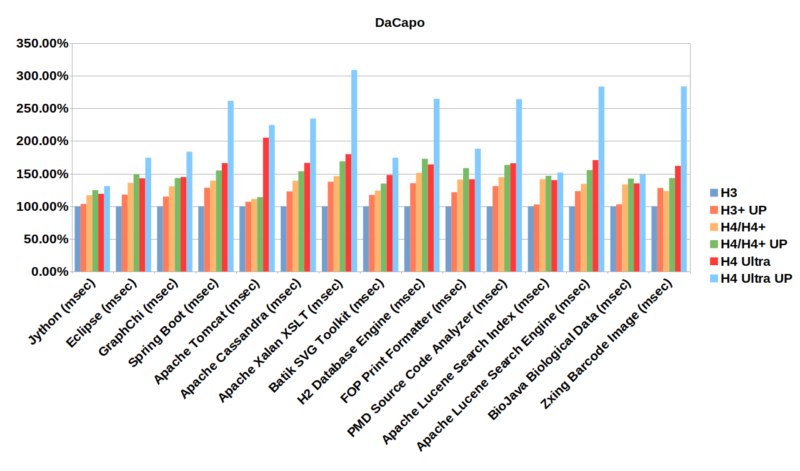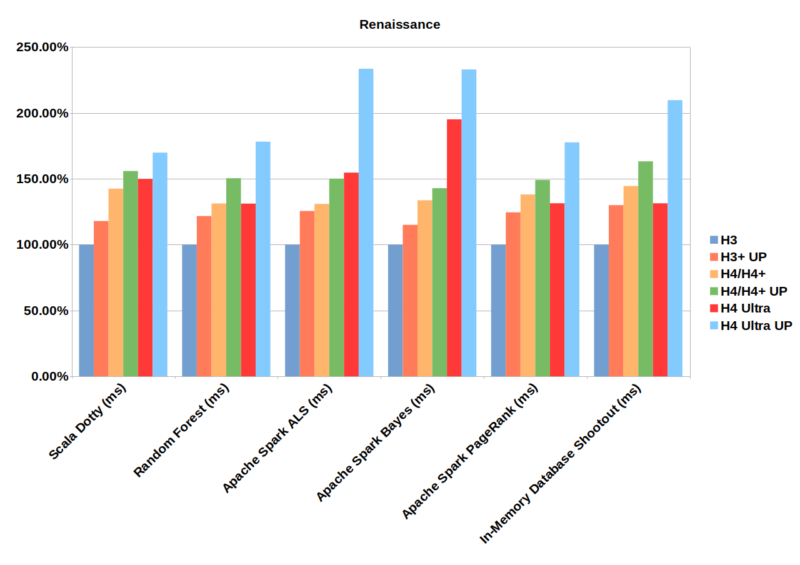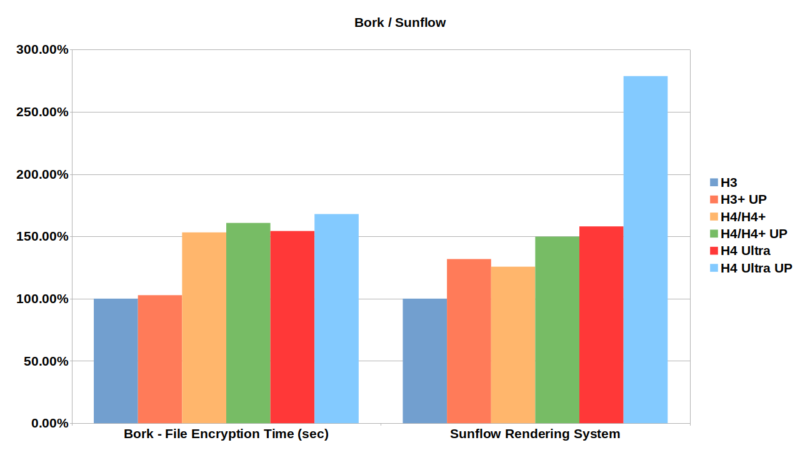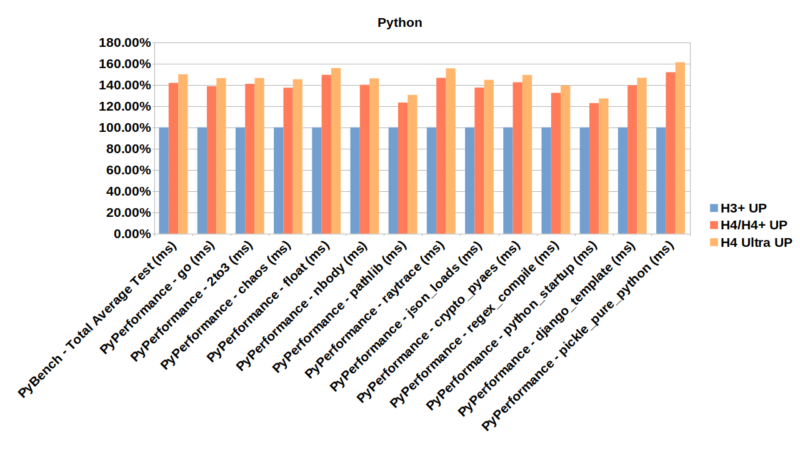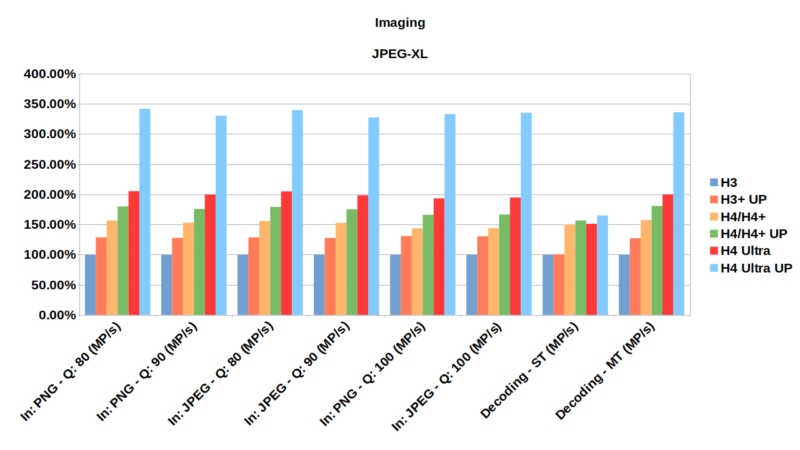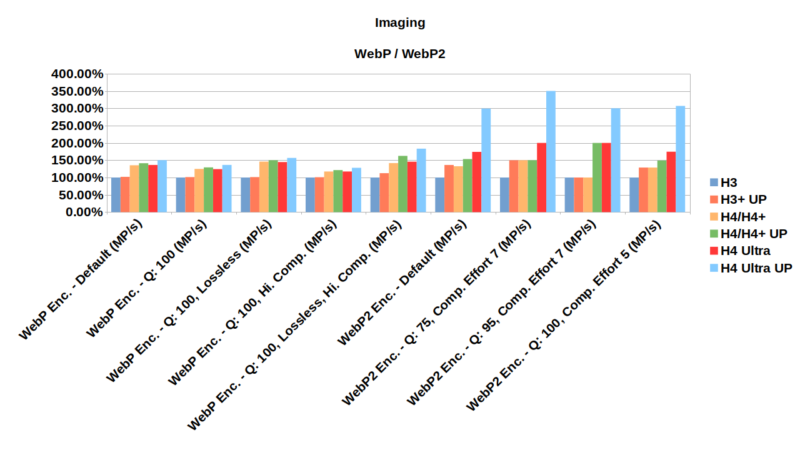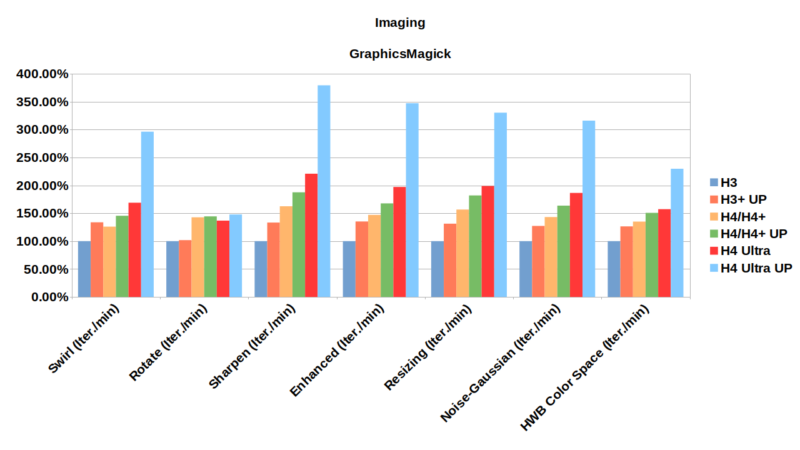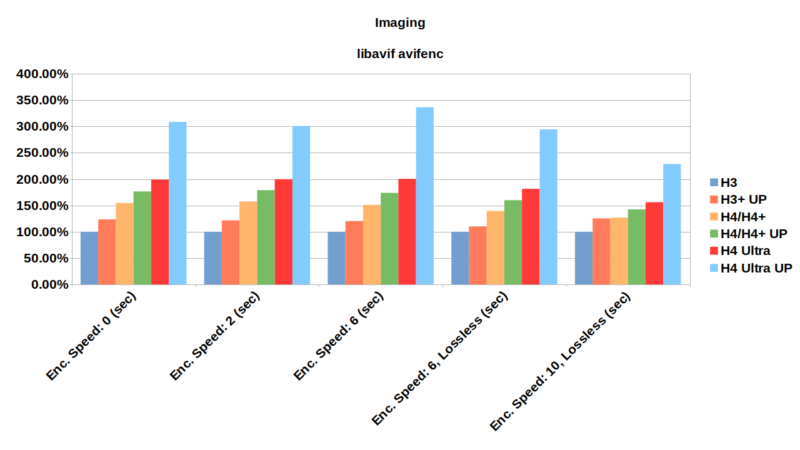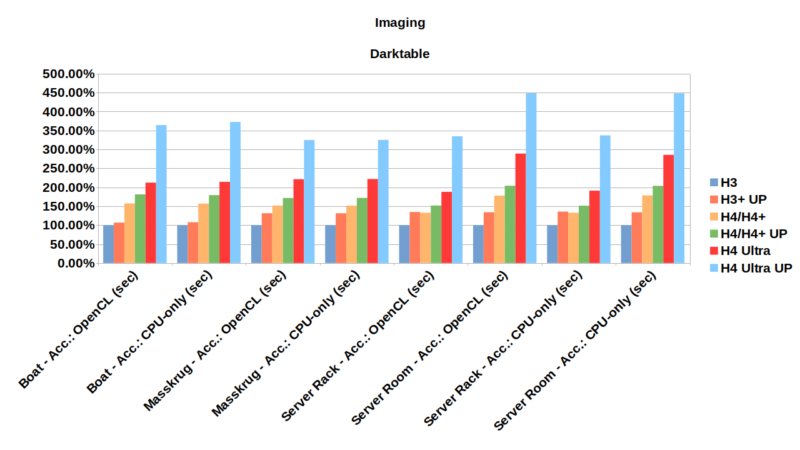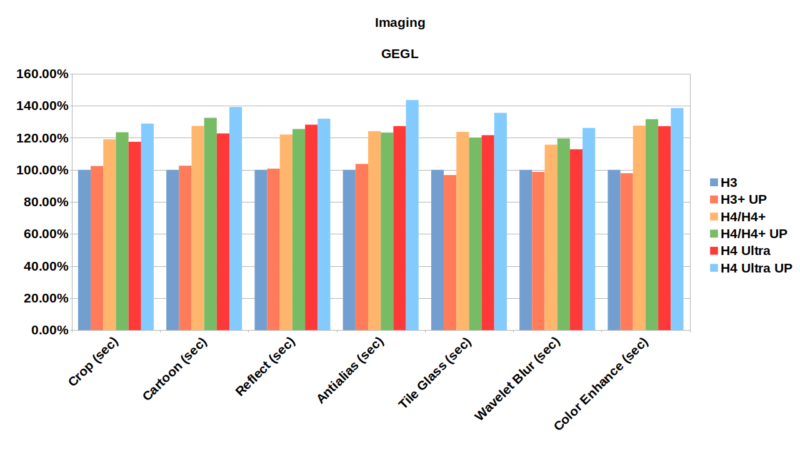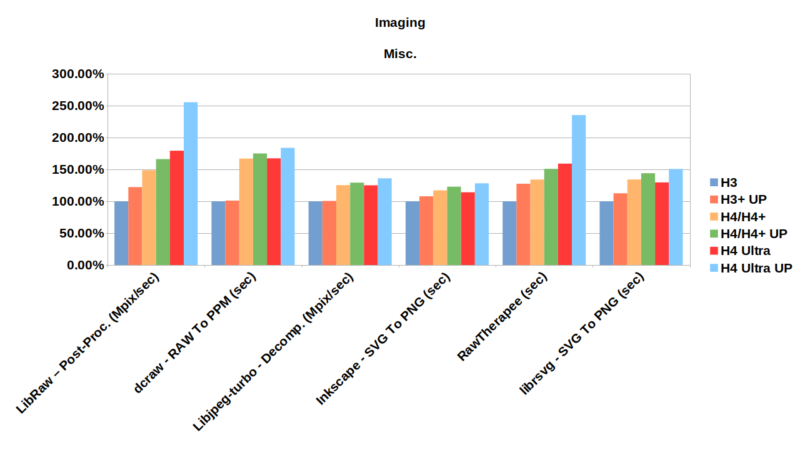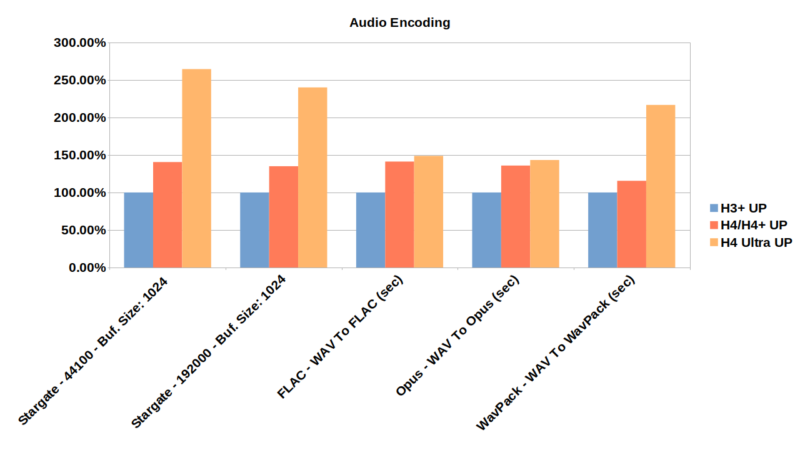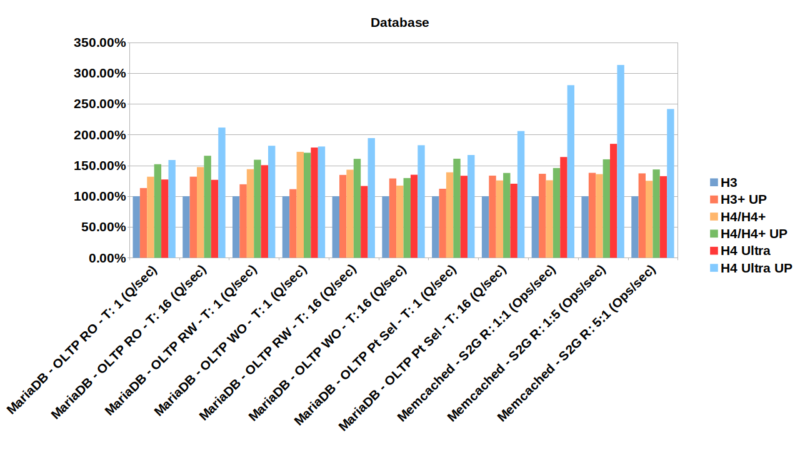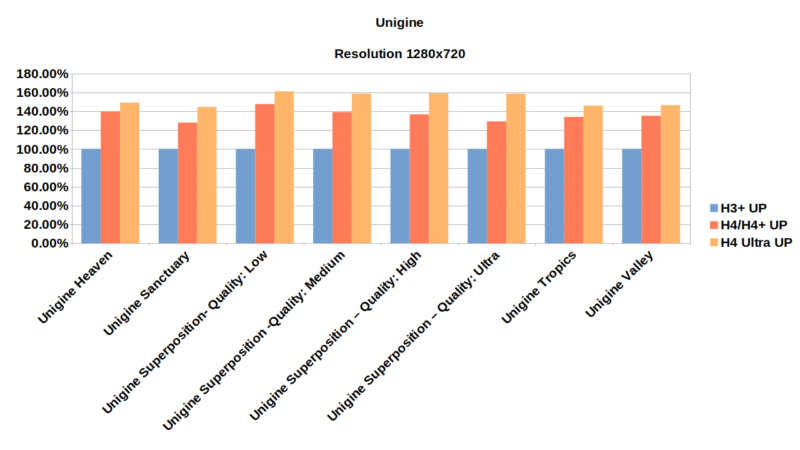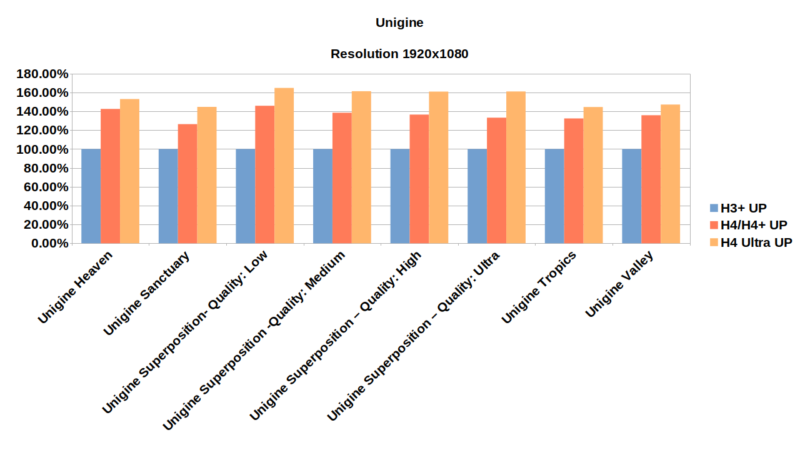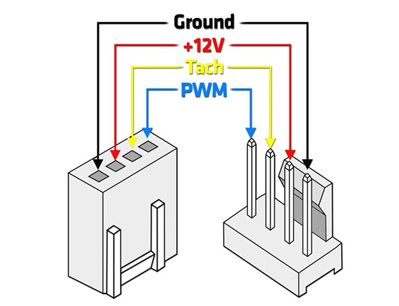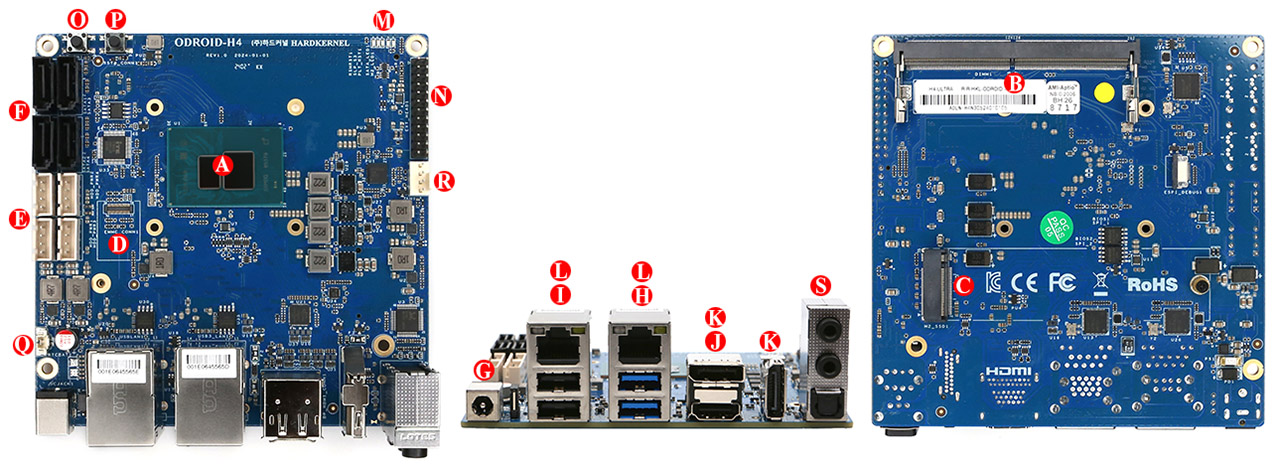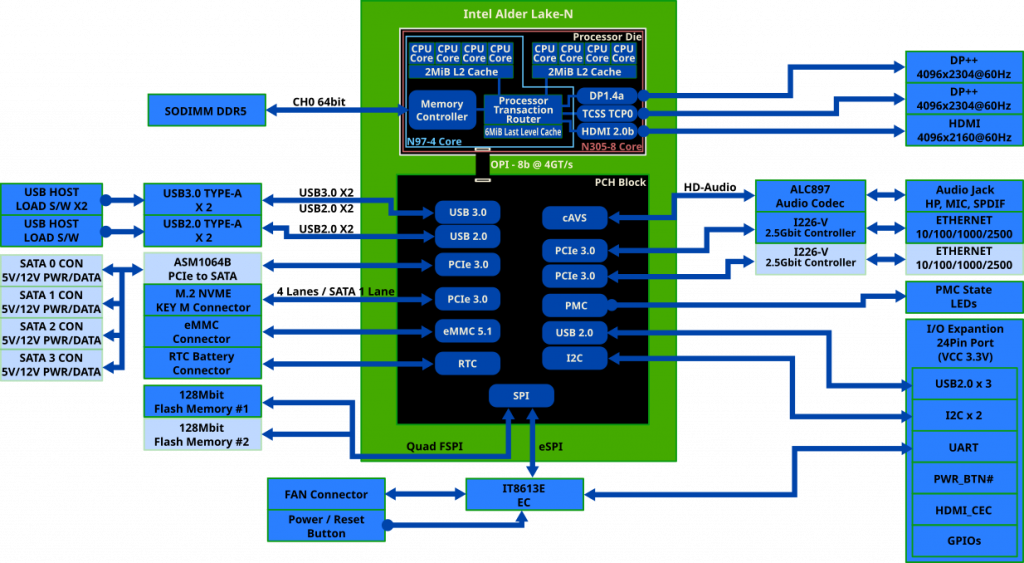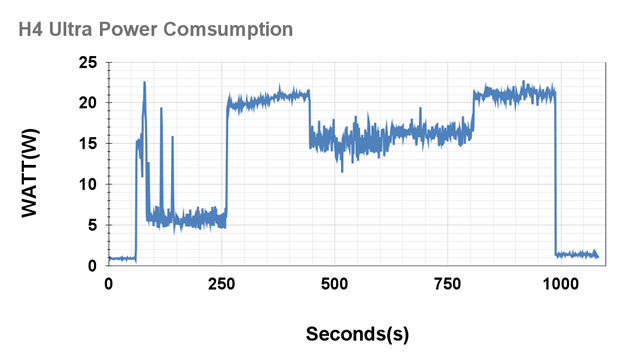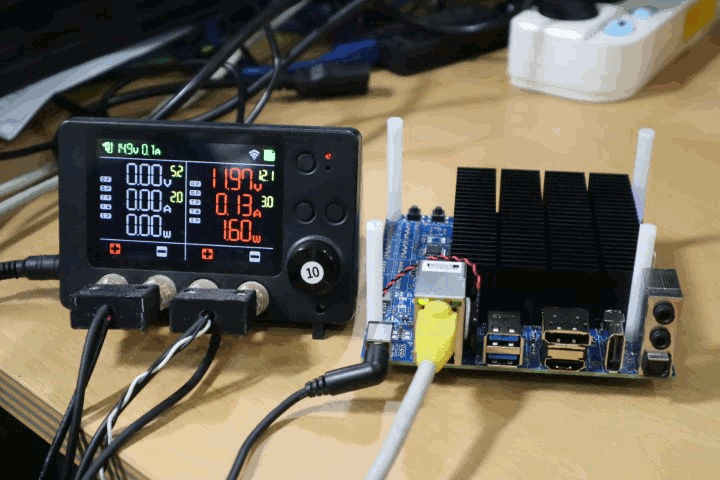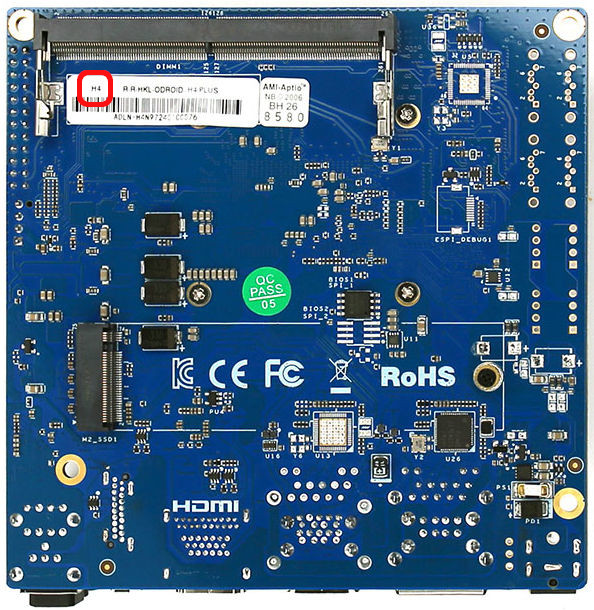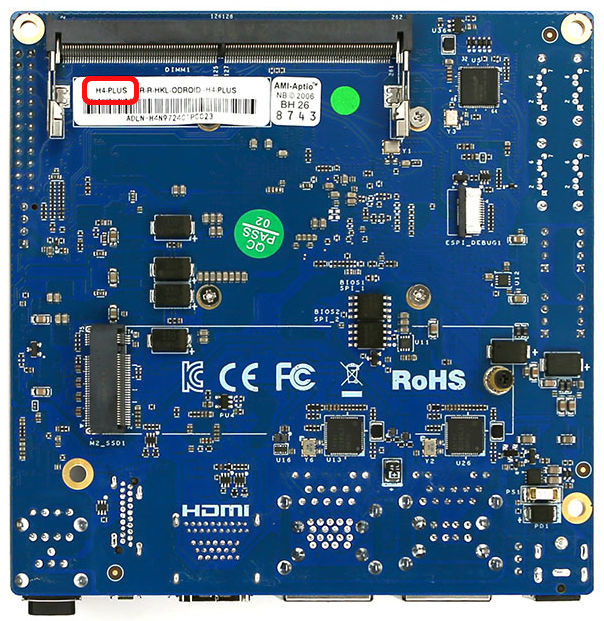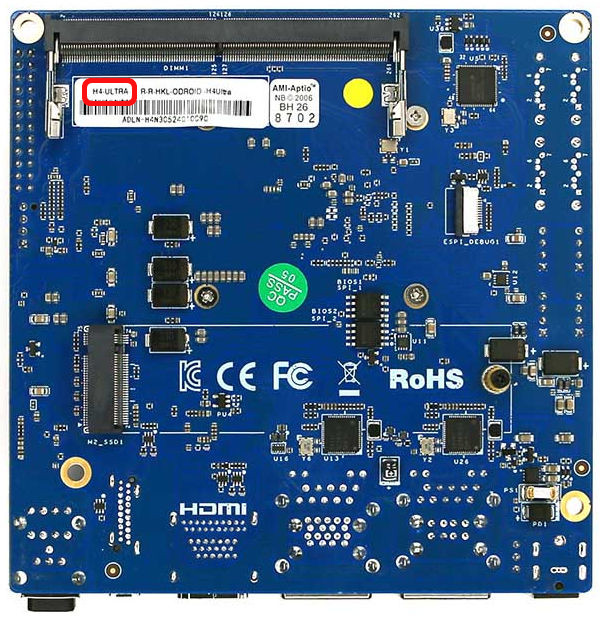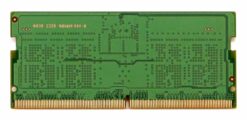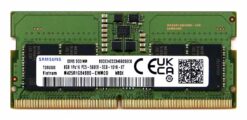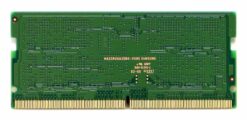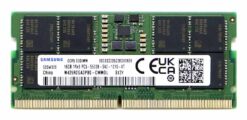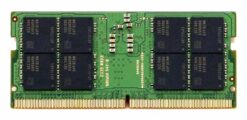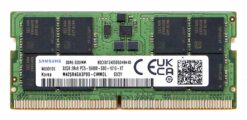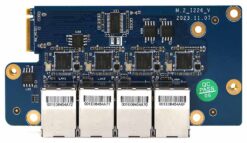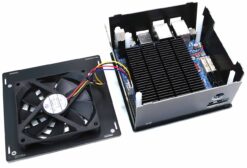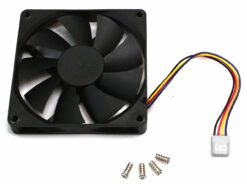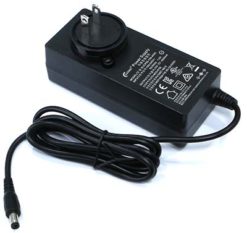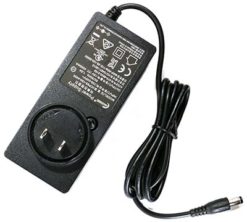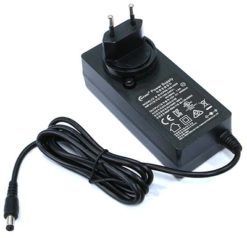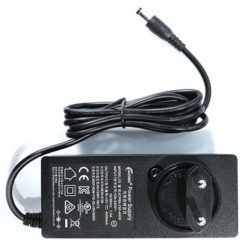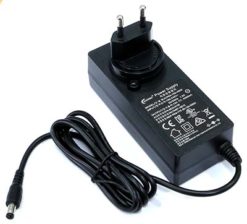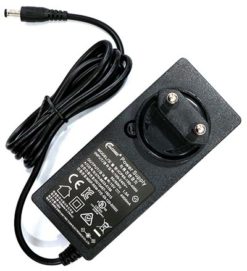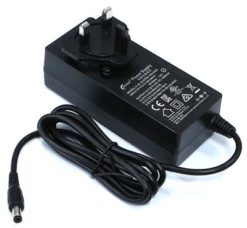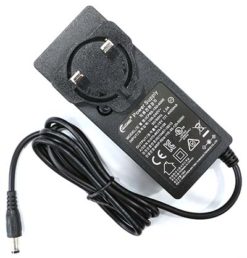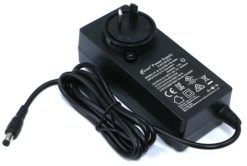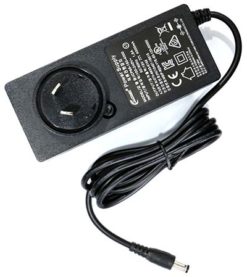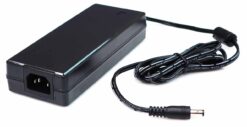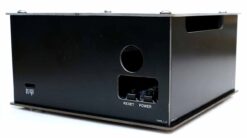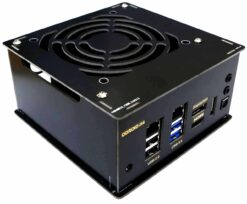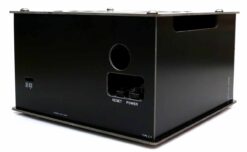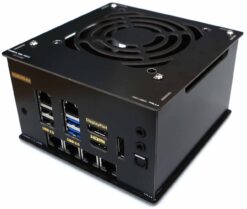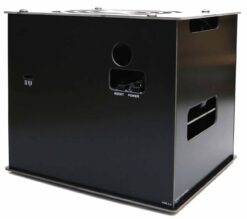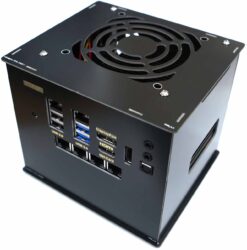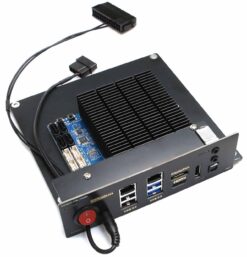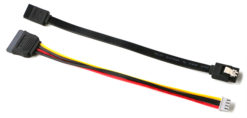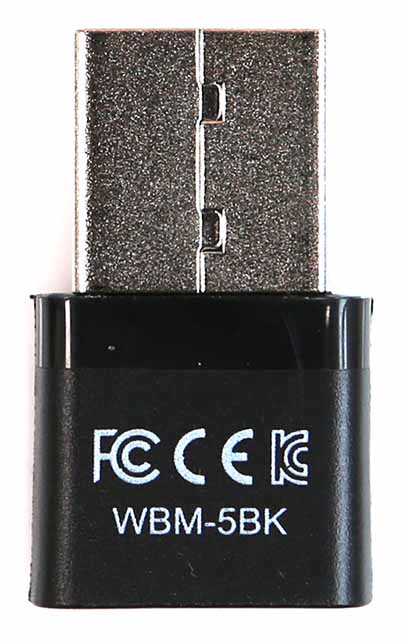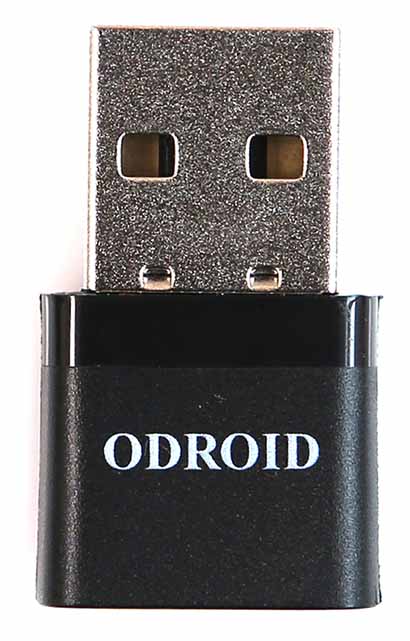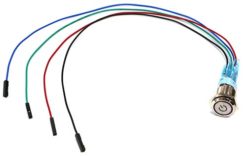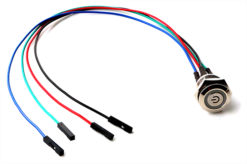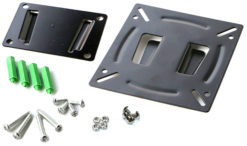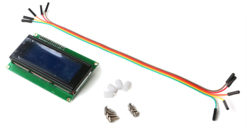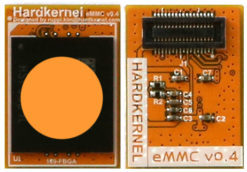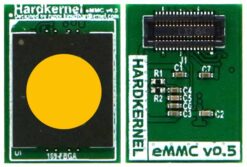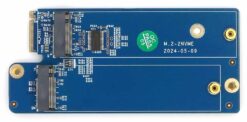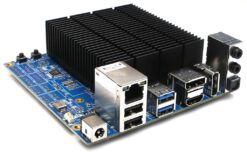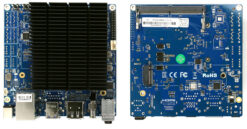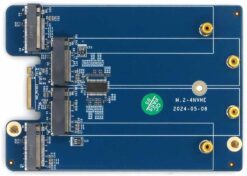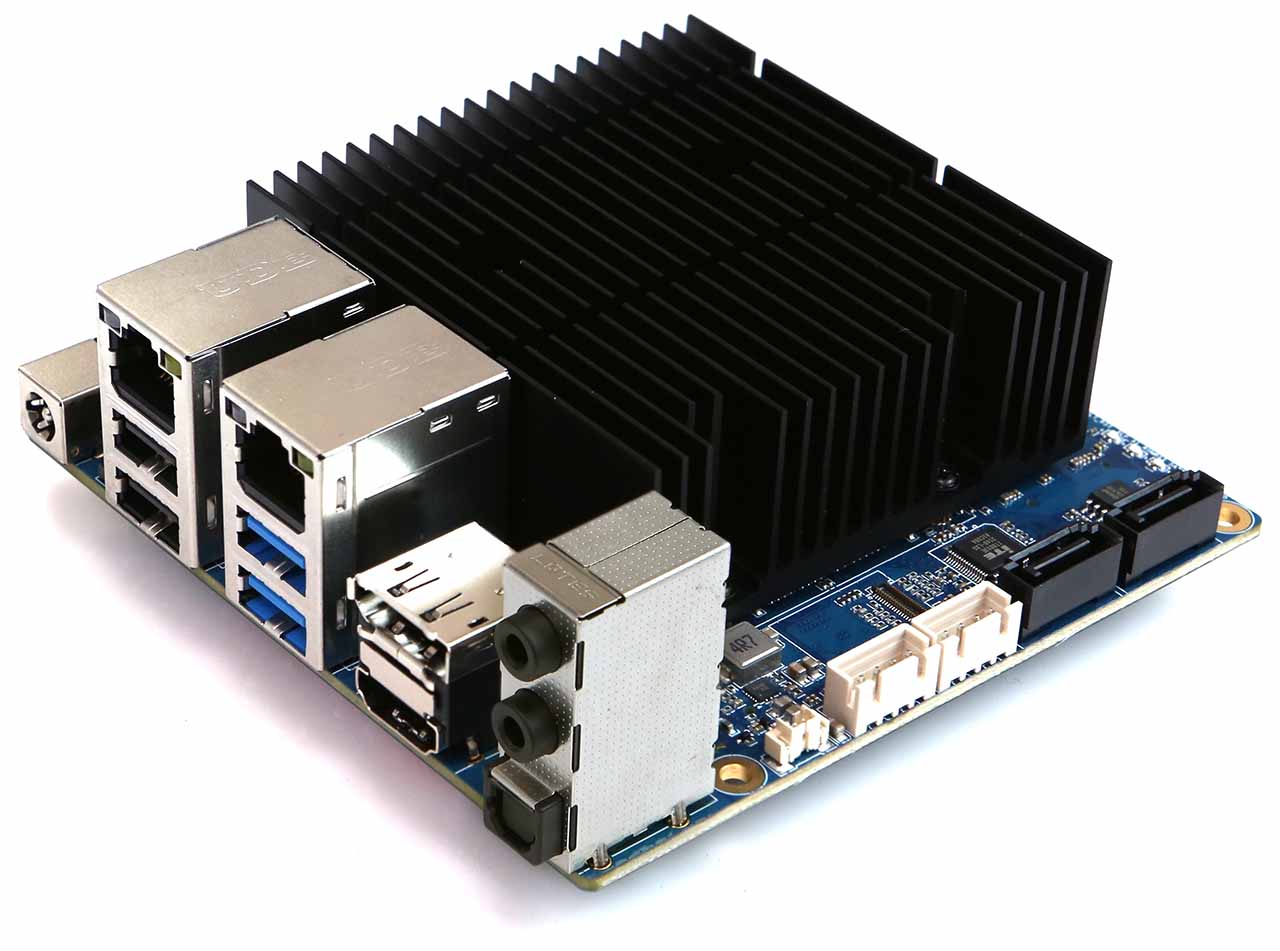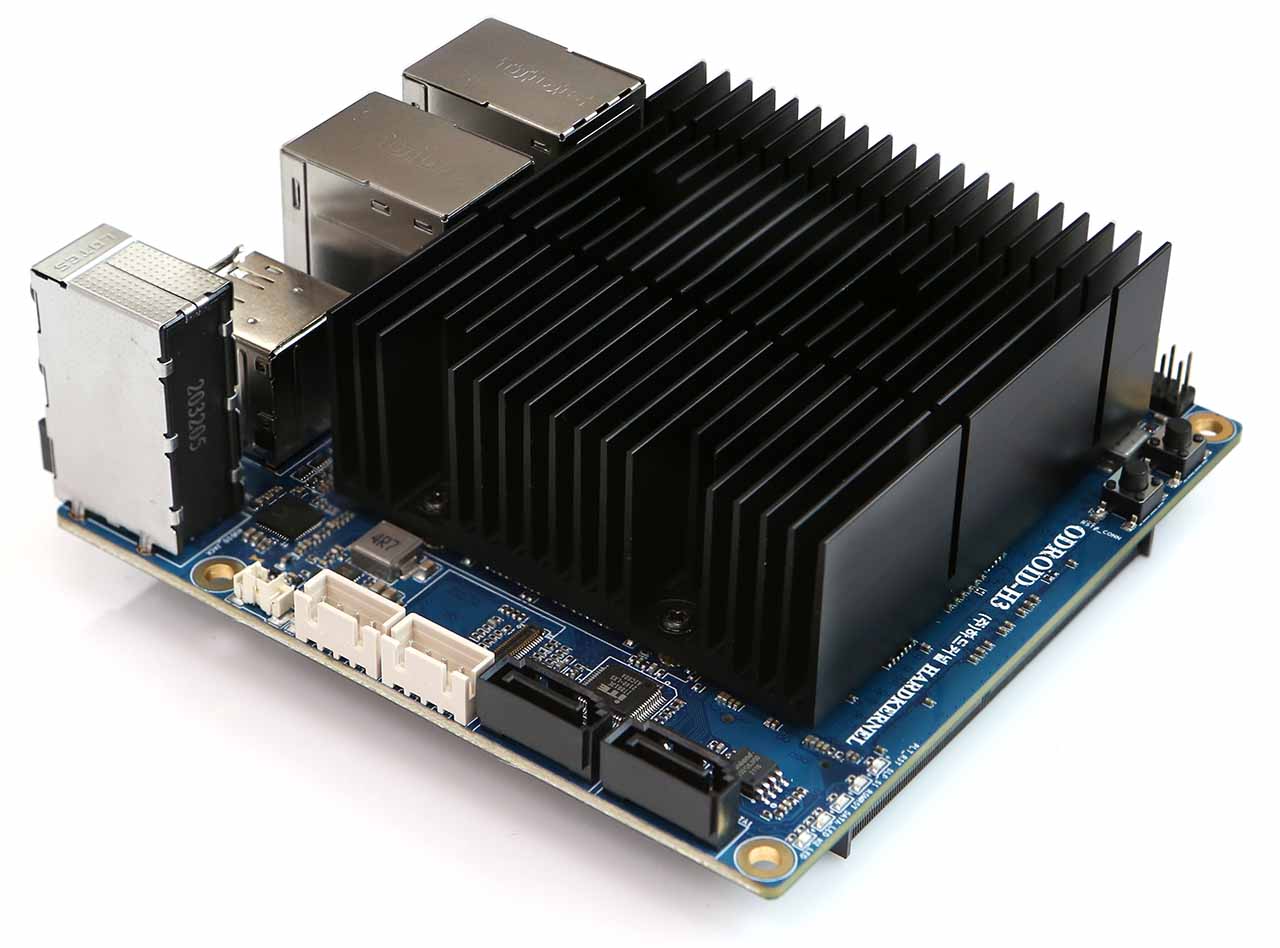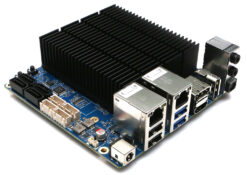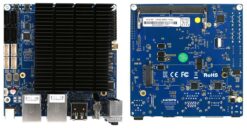The ODROID H-series is growing with three brand new models.
Again, the new generation is more powerful and offers higher performance.
It also delivers key new IO that will please many users.
Introducing the ODROID-H4, H4+ and H4 Ultra
Hardkernel is introducing the ODROID-H4, H4+ and H4 Ultra, which is equipped with higher performance and richer interfaces.
The major characteristics of the ODROID-H4 series compared to the ODROID-H3 series are:
- Faster CPU architecture Alder Lake N vs. Jasper Lake. Plus AVX2 extensions.
- Faster DRAM interface DDR5 4800 MT/s vs. DDR4 2933 MT/s.
- Higher base and boost CPU frequencies and more powerful iGPU.
- The increase from 2 to 4 SATA ports allows connection to a greater number of storage devices, ODROID-H4+ and ODROID H4 Ultra only.
- An additional DisplayPort added allows the simultaneous use of up to 3 monitors.
- Low cost ODROID H4 for compute and graphics applications (e.g signage, robot, factory automation,..)
- Flagship H4 Ultra doubling the number of CPU cores, from 4 to 8 cores.
We also implemented little details following the ODROID-H3 feedback we receive from all of our users, this means you. Examples:
- Dual BIOS: If the BIOS is corrupted due to a power outage during update, etc., you can boot into the backup BIOS and recover by moving the jumper next to the DC jack. This feature is only available on ODROID-H4+ and ODROID H4-Ultra.
- The new H4 cases format has been improved so that a cooling fan can be mounted inside the case.
- A Mini-ITX kit for seamless integration with generic ITX PC cases.
Let’s look at the detailed table shown below.
| ODROID
H2+ (‘2020 Jun) |
ODROID
H3 (‘2022 Oct) |
ODROID
H3+ (‘2022 Oct) |
ODROID
H4 (‘2024 Apr) |
ODROID
H4+ (‘2024 Apr) |
ODROID
H4 Ultra (‘2024 Apr) |
|
| Processor | ||||||
| CPU (Intel) | Celeron J4115 | Celeron N5105 | Pentium N6005 | Processor N97 | Processor N97 | Core™ i3 Processor N305 |
| Code name | Gemini Lake | Jasper Lake | Jasper Lake | Alder Lake-N | Alder Lake-N | Alder Lake-N |
| Launch date | Q4’17 | Q1’21 | Q1’21 | Q1’23 | Q1’23 | Q1’23 |
| Microarchitecture | Goldmont Plus | Tremont | Tremont | Gracemont | Gracemont | Gracemont |
| Cores / Threads | 4C4T | 4C4T | 4C4T | 4C4T | 4C4T | 8C8T |
| Cache | 4 MB | 4 MB | 4 MB | 6 MB | 6 MB | 6 MB |
| AVX2 (Advanced Vector Extensions) | No | No | No | Yes | Yes | Yes |
| TDP | 10W | 10W | 10W | 12W | 12W | 15W |
| Single Thread Burst Frequency (GHz) | 2.5 | 2.9 | 3.3 | 3.6 | 3.6 | 3.8 |
| Memory | ||||||
| Max. Memory address space (GB) | 32 | 64 | 64 | 48 | 48 | 48 |
| Max. Memory Speed (MT/s) | DDR4-2400 | DDR4-2933 | DDR4-2933 | DDR5-4800 | DDR5-4800 | DDR5-4800 |
| iGPU (Intel UHD Graphics) | ||||||
| Burst Frequency (MHz) | 750 | 800 | 900 | 1200 | 1200 | 1250 |
| Execution Units | 12 | 24 | 32 | 24 | 24 | 32 |
| Video outputs | ||||||
| HDMI | 1 | 1 | 1 | 1 | 1 | 1 |
| DisplayPort | 1 | 1 | 1 | 2 | 2 | 2 |
| PCIe (via NVMe slot) | ||||||
| Generation | Gen 2 | Gen 3 | Gen 3 | Gen 3 | Gen 3 | Gen 3 |
| Lanes | 4 | 4 | 4 | 4 | 4 | 4 |
| Compatibility with optional 4-ports 2.5GbE Net Card | Yes | Yes | Yes | Yes | Yes | Yes |
| IO ports | ||||||
| USB 2.0 | 2 ports | 2 ports | 2 ports | 2 ports | 2 ports | 2 ports |
| USB 3.0 | 2 ports | 2 ports | 2 ports | 2 ports | 2 ports | 2 ports |
| 2.5GbE | 2 ports | 2 ports | 2 ports | 1 port | 2 ports | 2 ports |
| SATA III | 2 ports | 2 ports | 2 ports | No | 4 ports | 4 ports |
| 24pin IO Expansion ports | I2C x 2 | I2C x 2 | I2C x 2 | I2C x 2 | I2C x 2 | I2C x 2 |
| USB 2.0 x 1 | USB 2.0 x 3 | USB 2.0 x 3 | USB 2.0 x 3 | USB 2.0 x 3 | USB 2.0 x 3 | |
| UART x 2 | UART x 1 | UART x 1 | UART x 1 | UART x 1 | UART x 1 | |
| HDMI-CEC x 1 | HDMI-CEC x 1 | HDMI-CEC x 1 | HDMI-CEC x 1 | HDMI-CEC x 1 | HDMI-CEC x 1 | |
| Ext. Power Button x 1 | Ext. Power Button x 1 | Ext. Power Button x 1 | Ext. Power Button x 1 | Ext. Power Button x 1 | Ext. Power Button x 1 | |
| Others | ||||||
| Optional Cooling Fan | 92 mm 5 Volt
mini 4pin connector |
92-25 mm 12 Volt
standard PC 4-pin |
92-25 mm 12 Volt
standard PC 4-pin |
Slim 92-15 or thick 92-25 mm 12 Volt
standard PC 4-pin Slim fan fits inside the new cases. |
Slim 92-15 or thick 92-25 mm 12 Volt
standard PC 4-pin Slim fan fits inside the new cases. |
Slim 92-15 or thick 92-25 mm 12 Volt
standard PC 4-pin Slim fan fits inside the new cases. |
| Dimensions | 110x110mm (4.3×4.3 in) | 110x110mm (4.3×4.3 in) | 110x110mm (4.3×4.3 in) | 120x120mm (4.7×4.7 in) | 120x120mm (4.7×4.7 in) | 120x120mm (4.7×4.7 in) |
| Recommended Power Supply 1 | 60W | 60W | 60W | 60W | 60W | 60W |
| Recommended Power Supply 2 for supporting booting with 3.5″ hard disks | 133W | 133W | 133W | 133W | 133W | 133W |
| Unlimited Performance Mode | No | Yes | Yes | Yes | Yes | Yes |
| Security (TPM 2.0) | Couldn’t be supported | fTPM enabled
(Will run Windows 11 out of the box) |
||||
| Hardkernel H-series cases | DIY assembly
Translucent Blue Acrylic |
DIY assembly
The cases are made of solid and sturdy PCBs. |
DIY assembly
The cases are made of solid and sturdy PCBs. A classic GameCube-style case will be released in May or June separately. |
|||
| Certifications | FCC/CE/KC/RoHS | FCC/CE/KC/RoHS | FCC/CE/KC/RoHS | FCC/CE/KC/RoHS | FCC/CE/KC/RoHS | FCC/CE/KC/RoHS |
| Pricing | $119 | $129 | $165 | $99 | $139 | $220 |
Noteworthy Features
Why the N97 instead of the N100?
Bigger numbers aren’t always better. INTEL naming may be deceiving.
We chose the N97 because its Maximum Turbo Frequency is 200MHz higher than the N100, respectively 3.60GHz vs. 3.40GHz. In addition, the GPU Max Dynamic Frequency is a whopping 450MHz higher, respectively 1.2GHz vs. 750MHz.
The TDP value of the N97, which is therefore faster than the N100, is higher, but there is almost no difference in power consumption at idle state. Although the N97 is more expensive, we chose it for its higher performance.
Single-Channel Memory
This is a decision made by Intel. The Alder Lake N processors only offer one single-channel of memory. However, the DDR5 speed of 4800 MT/s as well as the Dual Rank (r2x8) option largely compensate for the double-channel of DDR4 with the H2 and H3 series. The DDR5 4800 MT/s of the H4 series leaves the DDR4 2933 MT/s and DDR4 2400 MT/s of the H3 and H2 series in its rear mirror.
Note: While the Intel ARK pages specify the Alder Lake N max. memory to be 16GB, we validated that 32 and 48 GB DDR5 SO-DIMMs 4800 or 5600 MT/s work as well. The 5600 MT/s will run at 4800 MT/s. The Intel specifications for the H2 and H3 processors were limited as well, but many users were able to (respectfully) pump up the max. memory to 32 and 64 GB.
How many SATA ports and video outputs?
Compared to the previous generation Gemini Lake or Jasper Lake, the design flexibility of the new Alder Lake-N’s high-speed signal interface has been significantly reduced. To enable SATA ports inside the SoC, a choice arose: reducing the number of PCIe lanes for NVMe from 4 to 2 or find another way. In order to avoid compromising the speed of NVMe, it was inevitable to add an external, expensive SATA controller.
Thanks to a controller that supports four SATA ports, the requirement to connect many storage devices has been resolved. As the performance of CPU, GPU, and DRAM increases, it has become possible to drive a large number of displays. Therefore, in addition to the one output each for HDMI and DisplayPort in the existing H series, the new H4 series is equipped with an additional DisplayPort, allowing a total of three 4K monitors to be connected simultaneously.
Because there are more connectors with relatively large footprints, the form factor has changed from 110x110mm to 120x120mm, and the area has increased by about 20%. As a result, form factor compatibility with the existing H2/H3 series has unfortunately disappeared. However, this affects only the case compatibility. Accessories such as the Net Card work on H2, H3 and H4 series.
Which H4 model is the best for you?
To allow you to use a high-performance platform at a relatively low cost, we removed all SATA functions, the second Ethernet port, and the Dual-BIOS feature to create a basic H4 model that focuses on cost-effectiveness. Therefore, it is suitable for application to embedded systems such as digital signage or factory automation or robot control.
On the other hand, the H4+ is equipped with four SATA ports, a second Ethernet port, and Dual-BIOS feature, making it the best choice for users who need mass storage for high-performance NAS and/or use it for routing capabilities.
Finally, although it is more expensive, we have also designed the H4 Ultra model, which can take advantage of powerful performance with twice the number of CPU cores (from 4 to 8) and more GPU execution units. Thanks to its many cores and fast clocks, the H4 Ultra model shows computing performance that can be twice as high as the H4 and H4+ models, based on multithreaded computing benchmarking results.
If you are very sensitive to power consumption, the H4 model would be the most desirable option. This is because the power in idle state is about 1 Watt lower than the H4+ model.
Performance
Thanks to the Intel Alder Lake-N Gracemont architecture, the higher frequencies of the N97, for the H4 and H4+, and N305, for the H4 Ultra, coupled with DDR5 4800 MT/s, the H4 and H4+ in UP mode are on average around 36% more performant than the H3+ in UP mode. The increased performance jumps to around 83% for the H4 Ultra, again compared to the H3+ in UP mode. This is what we witnessed while running 206 mostly non-synthetic benchmarks. We review these benchmarks further down. We will also see that the increased performance climbs to even higher numbers for multi-threaded applications.
Versatility
For the last 4 years, We acquired a lot of experience and feedback from users, meaning you, first with the H2 series, then with the H3 series. We have seen and still see an incredible broad range of applications.
Some users pushed their ODROID to the max with as much memory as possible, disks, discrete graphics cards, additional SATA ports cards or high-bandwidth network cards.
Conversely, other users made their ODROID as frugal as possible, chasing the last tenths of Watt that could be saved. In this matter, see section Power Consumption Characteristics, we worked on many aspects to make significantly low idle power consumption possible, as well as documenting and enabling users to know how to reach idle power that is not at all high compared to ARM series
boards. We believe this is essential, especially for European users where the cost of electrical energy has been rising for years, to which you add the goal of reducing net greenhouse gas emissions, as targeted by the EU, while running 24×7 systems.
These two extremes, and everything in the middle, are possible because the H series boards can be widely customized. We believe the success of the ODROID H-series is in part due to its original DIY design goal with boards that do not restrict you to one kind of application, e.g. TV box.
The ODROID H4 series doubles down on versatility by adding the low cost H4, with stripped down hardware, on one side of the H4+, and the 8-core H4 Ultra flagship on the other side of the H4+.
The table shown below details the H4 series user-level customizations:
| Design | An SBC design that makes sense: all the connectivity is on the rear side, simplifying case design and reducing footprint on a desk. | |||
| H-series Net Card | Using the NVMe port, provides 4 additional 2.5 GbE ports, thus tripling the number of 2.5 GbE ports to 6 ports. | |||
| Do It Yourself | The ODROID H-series offers you a lot of freedom. You are free to chose:
1. The amount and brand of memory. No soldered memory. 2. The size of the eMMC (including not using one). No soldered eMMC. 3. The size of the NVMe PCIe Gen 3 x4 SSD, including not using one(*). 4. To transform the NVMe slot into a PCIe Gen 3 x4 slot for using PCIe cards via optional adapter cable(*). 5. The size of the 1 to 4 SATA III hard disks or SSDs, including not using them (H4+ and H4 Ultra only). 6. A case among 4 (soon to be 5) types of Hard Kernel cases or use a custom one you design or another user designed or use a mainstream Mini-ITX case thanks to the ODROID H4 Mini-ITX kit. 7. Hard Kernel cases allow the usage of an optional silent fan for optimal thermal performance. 8. Any x86-64 flavor of Windows, Linux or BSD operating systems, etc. 9. To upgrade the hardware later with larger memory, more NVMe or SSD or hard disk space. 10. To maximize performance or to minimize power consumption thanks to well documented BIOS and OS options. (*) PCIe Gen 2 on the H2/H2+. |
|||
Comparing the H4, H4+, H4 Ultra to H3+
In order to evaluate the performance of the H4, H4+ and H4 Ultra and compare them to their predecessor, we elected to compare them only to the H3+ and H3+ UP, the fastest of the previous H-series generations.
As a reminder, you can retrieve the comparison of the H3 and H3+ vs. the H2+ there:
https://forum.odroid.com/viewtopic.php?f=168&t=45406
With the PDF version available there:
https://dn.odroid.com/ODROID-H2/H3_pics/H3_H3+_Introduction.pdf
What is the meaning of UP?
The acronym UP indicates that the CPU is running in “Unlimited Performance Mode”. This is a mode where the CPU can run in Turbo Boost mode with no time limit, hence the name. The Unlimited Performance Mode is described in the next section.
As we are going to see, the Alder Lake N97 tops the Jasper Lake and the Alder Lake N305 is in a class of its own when compared to the Jasper Lake and ADL N97, especially in UP mode.
We proceeded with real application benchmarks rather than synthetic ones. To do so we ran a battery of Phoronix testing suites. These testing suites are listed below:
- Compilation (subset)
- Compression
- Java (subset)
- Python
- Imaging
- Audio Encoding
- Databases
- Unigine GPU
- Cryptography
- Video Encoding
The Phoronix Testing Suite is available there: https://www.phoronix-test-suite.com/. As stated on its web site, we quote: “The Phoronix Test Suite [is an OSS project that] makes the process of carrying out automated tests incredibly simple. The Phoronix Test Suite will take care of the entire test process from dependency management to test download/installation, execution, and result aggregation.”
Note: We ran a subset of each testing suite in order to keep this document short for clarity purposes.
Let us examine the results we obtained with tables and charts showing the H3+ as base 100. Example: using the line Timed Apache Comp. in the Compilation Benchmark table shown below, the H3+ UP is 30.32% faster, the H4/H4+ 35%, the H4/H4+ UP 51.95%, the H4 Ultra 50.39% and finally the H4 Ultra UP 101.51% faster.
What is the meaning of UP?
The acronym UP indicates that the CPU is running in “Unlimited Performance Mode”. This is a mode where the CPU can run in Turbo Boost mode with no time limit, hence the name. The Unlimited Performance Mode is described further down.
Compilation Benchmark
| H3+
(base 100) |
H3+ UP | H4/H4+ | H4/H4+ UP | H4 Ultra | H4 Ultra UP | |
| Timed Apache Comp. | 100 | 130.32 | 135.00 | 151.95 | 150.39 | 201.51 |
| Timed ImageMagick Comp. | 100 | 124.33 | 12304 | 140.66 | 177.29 | 287.77 |
| Timed Node.js Comp. | 100 | 130.03 | 149.91 | 170.84 | 175.57 | 267.52 |
| Timed PHP Comp. | 100 | 122.37 | 141.64 | 159.50 | 171.49 | 249.60 |
| Timed CPython Comp. | 100 | 128.84 | 133.75 | 151.93 | 161.97 | 243.78 |
| All Compilation | ||||||
| Average | 100 | 127.18 | 136.67 | 154.98 | 167.34 | 250.04 |
| Min | 100 | 122.37 | 123.04 | 140.66 | 150.39 | 210.51 |
| Max | 100 | 130.32 | 149.91 | 170.84 | 177.29 | 278.77 |
Benchmark description: https://openbenchmarking.org/suite/pts/compilation
Compression Benchmark
| H3+
(base 100) |
H3+ UP | H4/H4+ | H4/H4+ UP | H4 Ultra | H4 Ultra UP | |
| C-Blosc | 100 | 112.60 | 162.10 | 172.50 | 179.33 | 212.60 |
| lzbench | 100 | 101.14 | 133.73 | 137.85 | 133.66 | 144.90 |
| LZ4 Compression | 100 | 101.08 | 126.90 | 130.71 | 126.59 | 137.11 |
| Zstd Compression | 100 | 113.93 | 160.90 | 174.01 | 174.60 | 213.52 |
| All Compression | ||||||
| Average | 100 | 109.37 | 141.91 | 151.05 | 150.63 | 180.77 |
| Min | 100 | 99.15 | 101.33 | 105.41 | 101.43 | 110.58 |
| Max | 100 | 136.81 | 190.36 | 202.12 | 217.64 | 328.16 |
Benchmark description: https://openbenchmarking.org/suite/pts/compression
Java Benchmark
| H3+
(base 100) |
H3+ UP | H4/H4+ | H4/H4+ UP | H4 Ultra | H4 Ultra UP | ||
| Java SciMark | 100 | 101.43 | 129.58 | 133.41 | 130.10 | 138.20 | |
| DaCapo Benchmark | 100 | 119.58 | 134.19 | 148.34 | 156.73 | 218.54 | |
| Renaissance | 100 | 122.43 | 136.80 | 151.90 | 148.89 | 200.24 | |
| Bork File Encrypter | 100 | 102.81 | 153.20 | 160.82 | 154.32 | 167.93 | |
| Sunflow Rendering System | 100 | 131.80 | 125.68 | 149.80 | 158.02 | 278.69 | |
| All Java | |||||||
| Average | 100 | 117.35 | 134.48 | 147.44 | 151.00 | 202.93 | |
| Min | 100 | 101.21 | 111.11 | 114.03 | 119.03 | 126.14 | |
| Max | 100 | 137.56 | 153.20 | 172.76 | 205.12 | 308.90 |
Benchmark description: https://openbenchmarking.org/suite/pts/java
Python Benchmark
| H3+ UP | H4/H4+ UP | H4 Ultra UP | |
| PyBench – Total For Average Test Times (Milliseconds) | 100 | 141.81 | 149.95 |
| PyPerformance – Benchmark: go (Milliseconds) | 100 | 138.70 | 146.33 |
| PyPerformance – Benchmark: 2to3 (Milliseconds) | 100 | 140.92 | 146.41 |
| PyPerformance – Benchmark: chaos (Milliseconds) | 100 | 137.27 | 145.19 |
| PyPerformance – Benchmark: float (Milliseconds) | 100 | 149.38 | 155.84 |
| PyPerformance – Benchmark: nbody (Milliseconds) | 100 | 140.00 | 146.09 |
| PyPerformance – Benchmark: pathlib (Milliseconds) | 100 | 123.32 | 130.54 |
| PyPerformance – Benchmark: raytrace (Milliseconds) | 100 | 146.58 | 155.50 |
| PyPerformance – Benchmark: json_loads (Milliseconds) | 100 | 137.41 | 144.70 |
| PyPerformance – Benchmark: crypto_pyaes (Milliseconds) | 100 | 142.43 | 149.32 |
| PyPerformance – Benchmark: regex_compile (Milliseconds) | 100 | 132.40 | 139.41 |
| PyPerformance – Benchmark: python_startup (Milliseconds) | 100 | 122.82 | 127.25 |
| PyPerformance – Benchmark: django_template (Milliseconds) | 100 | 139.61 | 146.64 |
| PyPerformance – Benchmark: pickle_pure_python (Milliseconds) | 100 | 151.82 | 161.24 |
| All Python | |||
| Average | 100 | 138.89 | 146.03 |
| Min | 100 | 122.82 | 127.25 |
| Max | 100 | 151.82 | 161.24 |
Benchmark description: https://openbenchmarking.org/suite/pts/python
Imaging Benchmark
| H3+
(base 100) |
H3+ UP | H4/H4+ | H4/H4+ UP | H4 Ultra | H4 Ultra UP | |
| JPEG-XL libjxl – Input: PNG – Quality: 80 (MP/s) | 100 | 128.56 | 156.65 | 179.92 | 205.17 | 341.74 |
| JPEG-XL libjxl – Input: PNG – Quality: 90 (MP/s) | 100 | 127.81 | 153.03 | 175.79 | 199.98 | 330.35 |
| JPEG-XL libjxl – Input: JPEG – Quality: 80 (MP/s) | 100 | 128.51 | 155.69 | 179.05 | 204.78 | 339.57 |
| JPEG-XL libjxl – Input: JPEG – Quality: 90 (MP/s) | 100 | 127.53 | 152.60 | 175.24 | 198.34 | 327.30 |
| JPEG-XL libjxl – Input: PNG – Quality: 100 (MP/s) | 100 | 130.76 | 143.49 | 165.92 | 193.25 | 332.93 |
| JPEG-XL libjxl – Input: JPEG – Quality: 100 (MP/s) | 100 | 130.26 | 143.97 | 166.45 | 194.68 | 335.20 |
| JPEG-XL Decoding libjxl – CPU Threads: 1 (MP/s) | 100 | 100.52 | 149.62 | 156.54 | 151.04 | 165.07 |
| JPEG-XL Decoding libjxl – CPU Threads: All (MP/s) | 100 | 127.17 | 157.35 | 180.81 | 199.85 | 336.13 |
| WebP Image Encode – Encode Settings: Default (MP/s) | 100 | 101.93 | 135.41 | 141.38 | 136.33 | 150.28 |
| WebP Image Encode – Encode Settings: Quality 100 (MP/s) | 100 | 101.26 | 124.83 | 129.29 | 124.27 | 163.40 |
| WebP Image Encode – Encode Settings: Quality 100, Lossless (MP/s) | 100 | 101.32 | 146.05 | 150.00 | 144.74 | 156.58 |
| WebP Image Encode – Encode Settings: Quality 100, Highest Compression (MP/s) | 100 | 100.83 | 117.36 | 121.49 | 117.36 | 128.10 |
| WebP Image Encode – Encode Settings: Quality 100, Lossless, Highest Compression (MP/s) | 100 | 112.50 | 141.67 | 162.50 | 145.83 | 183.33 |
| WebP2 Image Encode – Encode Settings: Default (MP/s) | 100 | 136.30 | 132.59 | 153.33 | 174.07 | 299.26 |
| WebP2 Image Encode – Encode Settings: Quality 75, Compression Effort 7 (MP/s) | 100 | 150.00 | 150.00 | 150.00 | 200.00 | 350.00 |
| WebP2 Image Encode – Encode Settings: Quality 95, Compression Effort 7 (MP/s) | 100 | 100.00 | 100.00 | 200.00 | 200.00 | 300.00 |
| WebP2 Image Encode – Encode Settings: Quality 100, Compression Effort 5 (MP/s) | 100 | 128.81 | 128.81 | 149.15 | 174.58 | 306.78 |
| GraphicsMagick – Operation: Swirl (Iterations/min) | 100 | 133.77 | 125.97 | 145.45 | 168.83 | 296.10 |
| GraphicsMagick – Operation: Rotate (Iterations/min) | 100 | 101.81 | 142.69 | 144.33 | 136.78 | 147.78 |
| GraphicsMagick – Operation: Sharpen (Iterations/min) | 100 | 133.33 | 162.50 | 187.50 | 220.83 | 379.17 |
| GraphicsMagick – Operation: Enhanced (Iterations/min) | 100 | 135.29 | 147.06 | 167.65 | 197.06 | 347.06 |
| GraphicsMagick – Operation: Resizing (Iterations/min) | 100 | 131.33 | 156.63 | 181.93 | 198.80 | 330.12 |
| GraphicsMagick – Operation: Noise-Gaussian (Iterations/min) | 100 | 127.27 | 143.18 | 163.64 | 186.36 | 315.91 |
| GraphicsMagick – Operation: HWB Color Space (Iterations/min) | 100 | 126.41 | 135.01 | 150.74 | 157.27 | 229.67 |
| libavif avifenc – Encoder Speed: 0 (sec) | 100 | 123.57 | 154.66 | 176.52 | 199.25 | 308.44 |
| libavif avifenc – Encoder Speed: 2 (sec) | 100 | 121.73 | 157.66 | 179.05 | 199.67 | 300.73 |
| libavif avifenc – Encoder Speed: 6 (sec) | 100 | 120.48 | 151.07 | 173.89 | 200.43 | 336.35 |
| libavif avifenc – Encoder Speed: 6, Lossless (sec) | 100 | 110.26 | 139.48 | 159.99 | 181.48 | 294.32 |
| libavif avifenc – Encoder Speed: 10, Lossless (sec) | 100 | 125.46 | 126.97 | 142.63 | 156.14 | 228.69 |
| Darktable – Test: Boat – Acceleration: OpenCL (sec) | 100 | 106.74 | 157.34 | 181.22 | 212.26 | 364.36 |
| Darktable – Test: Boat – Acceleration: CPU-only (sec) | 100 | 107.76 | 157.02 | 179.42 | 214.33 | 372.49 |
| Darktable – Test: Masskrug – Acceleration: OpenCL (sec) | 100 | 131.50 | 151.76 | 171.76 | 221.34 | 324.76 |
| Darktable – Test: Masskrug – Acceleration: CPU-only (sec) | 100 | 131.45 | 151.55 | 171.97 | 221.87 | 325.18 |
| Darktable – Test: Server Rack – Acceleration: OpenCL (sec) | 100 | 134.75 | 132.69 | 151.75 | 187.99 | 334.79 |
| Darktable – Test: Server Room – Acceleration: OpenCL (sec) | 100 | 134.01 | 177.98 | 204.08 | 289.10 | 448.45 |
| Darktable – Test: Server Rack – Acceleration: CPU-only (sec) | 100 | 135.95 | 132.76 | 151.46 | 191.04 | 337.05 |
| Darktable – Test: Server Room – Acceleration: CPU-only (sec) | 100 | 133.90 | 178.54 | 203.83 | 285.53 | 448.03 |
| GEGL – Operation: Crop (sec) | 100 | 102.40 | 119.10 | 123.46 | 117.51 | 128.87 |
| GEGL – Operation: Cartoon (sec) | 100 | 102.62 | 127.43 | 132.48 | 122.72 | 139.20 |
| GEGL – Operation: Reflect (sec) | 100 | 100.76 | 122.02 | 125.48 | 128.19 | 131.93 |
| GEGL – Operation: Antialias (sec) | 100 | 103.67 | 124.13 | 123.27 | 127.31 | 143.54 |
| GEGL – Operation: Tile Glass (sec) | 100 | 96.76 | 123.70 | 120.12 | 121.63 | 135.56 |
| GEGL – Operation: Wavelet Blur (sec) | 100 | 98.73 | 115.71 | 119.56 | 112.8/2 | 126.12 |
| GEGL – Operation: Color Enhance (sec) | 100 | 97.91 | 127.62 | 131.63 | 127.26 | 138.56 |
| LibRaw – Post-Processing Benchmark (Mpix/sec) | 100 | 122.18 | 148.66 | 166.10 | 179.23 | 255.27 |
| dcraw – RAW To PPM Image Conversion (sec) | 100 | 101.02 | 166.91 | 174.87 | 167.24 | 183.76 |
| libjpeg-turbo tjbench – Test: Decompression Throughput (Megapixels/sec) | 100 | 100.50 | 125.29 | 129.18 | 125.02 | 135.97 |
| Inkscape – Operation: SVG Files To PNG (sec) | 100 | 107.72 | 117.07 | 122.84 | 113.99 | 128.12 |
| RawTherapee – Total Benchmark Time (sec) | 100 | 127.51 | 133.99 | 150.78 | 158.97 | 235.13 |
| librsvg – Operation: SVG Files To PNG (sec) | 100 | 112.42 | 134.15 | 143.91 | 129.49 | 150.62 |
| All Imaging | ||||||
| Average | 100 | 118.30 | 141.15 | 157.79 | 174.43 | 260.42 |
| Min | 100 | 96.76 | 100.00 | 119.55 | 112.82 | 126.12 |
| Max | 100 | 150.00 | 178.54 | 204.08 | 289.10 | 448.45 |
Benchmark description: https://openbenchmarking.org/suite/pts/imaging
Audio Encoding Benchmark
| H3+ UP | H4/H4+ UP | H4 Ultra UP | |
| Stargate Digital Audio Workstation – Sample Rate: 44100 – Buffer Size: 1024 (Render Ratio) | 100 | 140.52 | 264.34 |
| Stargate Digital Audio Workstation – Sample Rate: 192000 – Buffer Size: 1024 (Render Ratio) | 100 | 134.98 | 239.93 |
| FLAC Audio Encoding – WAV To FLAC (sec) | 100 | 141.18 | 148.70 |
| Opus Codec Encoding – WAV To Opus Encode (sec) | 100 | 135.85 | 143.26 |
| WavPack Audio Encoding – WAV To WavPack (sec) | 100 | 115.55 | 216.57 |
| All Audio Encoding | |||
| Average | 100 | 133.62 | 202.56 |
| Min | 100 | 115.55 | 143.26 |
| Max | 100 | 135.85 | 264.34 |
Benchmark description: https://openbenchmarking.org/suite/pts/audio-encoding
Databases Benchmark
| H3+
(base 100) |
H3+ UP | H4/H4+ | H4/H4+ UP | H4 Ultra | H4 Ultra UP | |
| MariaDB – Test: oltp_read_only – Threads: 1 (Queries/sec) | 100 | 113.31 | 131.73 | 152.03 | 127.18 | 158.84 |
| MariaDB – Test: oltp_read_only – Threads: 16 (Queries/sec) | 100 | 131.77 | 147.35 | 165.72 | 126.60 | 211.57 |
| MariaDB – Test: oltp_read_write – Threads: 1 (Queries/sec) | 100 | 119.40 | 143.96 | 159.26 | 150.43 | 181.95 |
| MariaDB – Test: oltp_write_only – Threads: 1 (Queries/sec) | 100 | 111.48 | 172.12 | 170.62 | 179.07 | 180.74 |
| MariaDB – Test: oltp_read_write – Threads: 16 (Queries/sec) | 100 | 134.59 | 143.08 | 160.74 | 116.60 | 194.43 |
| MariaDB – Test: oltp_write_only – Threads: 16 (Queries/sec) | 100 | 128.89 | 117.27 | 129.55 | 134.91 | 182.89 |
| MariaDB – Test: oltp_point_select – Threads: 1 (Queries/sec) | 100 | 112.11 | 138.85 | 160.92 | 133.25 | 166.97 |
| MariaDB – Test: oltp_point_select – Threads: 16 (Queries/sec) | 100 | 133.45 | 125.70 | 137.77 | 120.36 | 205.87 |
| Memcached – Set To Get Ratio: 1:1 (Ops/sec) | 100 | 136.48 | 125.92 | 145.85 | 163.70 | 280.37 |
| Memcached – Set To Get Ratio: 1:5 (Ops/sec) | 100 | 137.95 | 135.86 | 159.92 | 185.09 | 313.23 |
| Memcached – Set To Get Ratio: 5:1 (Ops/sec) | 100 | 137.09 | 125.05 | 143.49 | 132.56 | 241.67 |
| All Databases | ||||||
| Average | 100 | 126.96 | 136.99 | 153.26 | 142.70 | 210.78 |
| Min | 100 | 111.48 | 117.27 | 129.55 | 116.60 | 158.84 |
| Max | 100 | 137.95 | 172.12 | 170.62 | 185.09 | 313.23 |
Benchmark description: https://openbenchmarking.org/suite/pts/database
Unigine GPU Benchmark
1280×720 resolution
| H3+ UP | H4/H4+ UP | H4 Ultra UP | |
| Heaven | 100 | 139.89 | 149.27 |
| Sanctuary | 100 | 128.09 | 144.83 |
| Superposition (Low) | 100 | 147.73 | 161.36 |
| Superposition (Medium) | 100 | 139.22 | 158.82 |
| Superposition (High) | 100 | 136.84 | 159.21 |
| Superposition (Ultra) | 100 | 129.41 | 158.82 |
| Tropics | 100 | 134.10 | 158.82 |
| Valley | 100 | 135.37 | 146.55 |
| All Unigine | |||
| Average | 100 | 136.33 | 153.13 |
| Min | 100 | 128.09 | 144.83 |
| Max | 100 | 147.73 | 161.36 |
1920×1080 resolution
| H3+ UP | H4/H4+ UP | H4 Ultra UP | |
| Heaven | 100 | 142.60 | 153.10 |
| Sanctuary | 100 | 126.48 | 144.78 |
| Superposition (Low) | 100 | 145.95 | 164.86 |
| Superposition (Medium) | 100 | 138.60 | 161.40 |
| Superposition (High) | 100 | 136.59 | 160.98 |
| Superposition (Ultra) | 100 | 133.33 | 161.11 |
| Tropics | 100 | 132.51 | 144.64 |
| Valley | 100 | 135.94 | 147.27 |
| All Unigine | |||
| Average | 100 | 136.50 | 154.77 |
| Min | 100 | 126.48 | 144.64 |
| Max | 100 | 145.95 | 164.86
|
Benchmark description: https://openbenchmarking.org/suite/pts/unigine
Cryptography Benchmark
| H3+ UP | H4/H4+ UP | H4 Ultra UP | |
| Nettle – Test: aes256 (Mbyte/s) | 100 | 199.78 | 212.76 |
| Nettle – Test: chacha (Mbyte/s) | 100 | 143.57 | 151.58 |
| Nettle – Test: sha512 (Mbyte/s) | 100 | 156.54 | 165.11 |
| Nettle – Test: poly1305-aes (Mbyte/s) | 100 | 155.91 | 164.57 |
| Botan – Test: KASUMI (MiB/s) | 100 | 134.30 | 141.74 |
| Botan – Test: KASUMI – Decrypt (MiB/s) | 100 | 131.80 | 138.87 |
| Botan – Test: AES-256 (MiB/s) | 100 | 137.75 | 145.44 |
| Botan – Test: AES-256 – Decrypt (MiB/s) | 100 | 133.18 | 141.75 |
| Botan – Test: Twofish (MiB/s) | 100 | 161.22 | 170.13 |
| Botan – Test: Twofish – Decrypt (MiB/s) | 100 | 160.23 | 169.15 |
| Botan – Test: Blowfish (MiB/s) | 100 | 153.83 | 162.39 |
| Botan – Test: Blowfish – Decrypt (MiB/s) | 100 | 152.79 | 161.28 |
| Botan – Test: CAST-256 (MiB/s) | 100 | 122.31 | 129.12 |
| Botan – Test: CAST-256 – Decrypt (MiB/s) | 100 | 121.69 | 128.47 |
| Botan – Test: ChaCha20Poly1305 (MiB/s) | 100 | 158.07 | 166.98 |
| Botan – Test: ChaCha20Poly1305 – Decrypt (MiB/s) | 100 | 157.61 | 166.53 |
| OpenSSL – Algorithm: SHA256 (byte/s) | 100 | 134.67 | 278.86 |
| OpenSSL – Algorithm: SHA512 (byte/s) | 100 | 163.12 | 336.49 |
| OpenSSL – Algorithm: ChaCha20 (byte/s) | 100 | 138.84 | 287.18 |
| OpenSSL – Algorithm: AES-128-GCM (byte/s) | 100 | 153.00 | 290.25 |
| OpenSSL – Algorithm: AES-256-GCM (byte/s) | 100 | 152.19 | 292.15 |
| OpenSSL – Algorithm: ChaCha20-Poly1305 (byte/s) | 100 | 128.85 | 266.62 |
| GnuPG – 2.7GB Sample File Encryption (sec) | 100 | 123.39 | 130.26 |
| All Cryptography | |||
| Average | 100 | 146.72 | 191.20 |
| Min | 100 | 121.69 | 128.47 |
| Max | 100 | 199.78 | 336.49 |
Benchmark description: https://openbenchmarking.org/suite/pts/cryptography
Video Encoding Benchmark
| H3+ UP | H4/H4+ UP | H4 Ultra UP | |
| SVT-AV1 – Encoder Mode: Preset 4 – Input: Bosphorus 4K (FPS) | 100 | 190.69 | 336.99 |
| SVT-AV1 – Encoder Mode: Preset 4 – Input: Bosphorus 1080p (FPS) | 100 | 180.72 | 349.49 |
| x264 – Video Input: Bosphorus 4K (FPS) | 100 | 131.87 | 243.96 |
| x264 – Video Input: Bosphorus 1080p (FPS) | 100 | 123.85 | 241.85 |
| x265 – Video Input: Bosphorus 4K (FPS) | 100 | 152.61 | 265.85 |
| x265 – Video Input: Bosphorus 1080p (FPS) | 100 | 145.95 | 243.65 |
| All Video Encoding | |||
| Average | 100 | 154.28 | 280.30 |
| Min | 100 | 123.85 | 241.85 |
| Max | 100 | 190.69 | 349.90 |
Benchmark description: https://openbenchmarking.org/suite/pts/video-encoding
Summary
Note: This summary compares the UP versions of the H3+, H4, H4+ and H4 Ultra because we did not run all the benchmarks on the H3+ non-UP. We ran a total number of 206 benchmarks/cases using the UP configurations.
The major facts about these benchmarks are:
- The H4 and H4+ UP are on average around 36% more performant than the H3+ UP.
- With the H4 Ultra UP, the average climbs to around 83%!
- The H4 and H4+ UP can be up to twice faster than the H3+ UP for particular tests.
- The H4 Ultra UP can be up to three and a half faster than the H3+ UP for particular tests.
- The H4 Ultra UP is on average around 36% more performant than the H4 and H4+ UP.
- The H4 Ultra UP can be more than twice faster than the H4 and H4+ UP for particular tests.
- Not too surprising, with 8 cores vs. 4 cores, the H4 Ultra UP top performance occurs with multi-threaded applications
(e.g. Compilation, Java, Imaging, Stargate, MemCached, OpenSSL, Video Encoding,…) without being kneecapped by thermal throttling, thanks to Unlimited Performance and active cooling.
The table shown below shows the distribution of benchmarks where the increased performance is greater than or equal to 10, 20, 30, 40, 50 and 60%, comparing the H4 and H4+ UP to the H3+ UP. As an example, we have 20.39% (one-fifth) of the benchmarks showing at least 50% of increased performance.
The table shown below shows similar distribution data but for the H4 Ultra UP. One can see that just short of one-third of the benchmarks show a doubling of the performance compared to the H3+ UP.
Finally, the table shown below shows similar distribution data but comparing the H4 Ultra UP to the H4 or H4+ UP. One-quarter of the benchmarks show 70+% better performance, with 9% of them reaching 100+% better performance.
Benchmarks Configuration
ODROID-H3+: Ubuntu 22.04.3 (Gnome), 32 GB memory DDR4 2933 MT/s, NVMe PCIe Gen 3.
ODROID-H4: Ubuntu 22.04.4 (Gnome), 16 GB memory DDR5 4800 MT/s, NVMe PCIe Gen 3.
ODROID-H4+: Ubuntu 22.04.4 (Gnome), 32 GB memory DDR5 4800 MT/s, NVMe PCIe Gen 3.
ODROID-H4 Ultra: Ubuntu 22.04.4 (Gnome), 48 GB memory DDR5 4800 MT/s, NVMe PCIe Gen 3.
Unlimited Performance Mode
Starting with the Core 10th generation Intel introduced Power Limit 4 (PL4) and made it user configurable via the BIOS. What is it? PL4 is the SoC’s maximum power limit at the package level. No matter what the CPU is actually doing, it will not pass this limit. The interesting side of the story is that as a user you can set it to 0, which means no limit. Fortunately, Intel carried it with the Alder Lake-N processors.
The ODROID-H4, H4+ and H4 Ultra BIOS allows you to set this limit to 0. This is what we call Unlimited Performance mode. The default value is 30,000 corresponding to the Balanced mode, meaning around a SoC’s maximum power limit of 12W for the N97 of the ODROID H4 and H4+, and 15W for the N305 of the H4 Ultra.
Using the Unlimited Performance mode (annotated UP) with the ODROID-H4, H4+ and H4 Ultra enables the CPU to turbo boost indefinitely: 2.9 GHz all cores and 3.6 GHz one core for the H4 and H4+ , 3.0 GHz all cores and 3.8 GHz one core for the H4 Ultra.
As you may expect the CPU will get hot quickly (in a matter of minutes) and get close to his T Junction (Tj) temperature which will trigger its emergency shutdown as thermal protection. But the CPU will not reach Tj because it will automatically throttle down when it is about 5 degrees Celsius away from Tj (we tested this multiple times). As soon as the CPU thermally throttles down you start losing the increased performance you were aiming at while still consuming more power compared to the Balanced mode. Not ideal.
In order to prevent thermal throttling when using the Unlimited Performance mode, the solution is simple: active cooling with a fan.
We designed the H4, H4+ and H4 Ultra heat sink to make it very efficient:
(a) you do not need a fan in Balanced mode
(b) it has a high rate of thermal exchange when coupled with a fan.
Using a fan will decrease the maximal CPU temperature by about 25 to 30 degrees Celsius depending on factors such as the ambient temperature. It it difficult for us to give you precise temperature values because what one witnesses depends on many factors: as already mentioned the ambient temperature, the CPU BGA soldering thickness error, the heat sink assembly tolerance, the type of thermal paste and quantity applied, the cooling fan speed RPM error margin (which can be as high as 5 to 10%). All of these factors can result in a 10+ degrees Celsius difference between one setting and another.
The important point is that with active cooling you get the increased performance you aim at while the CPU stays just comfortably warm while turbo boosting indefinitely, way below temperatures close to Tj. In other words the fan active cooling brings you the best of both worlds. This is what we witnessed and validated while performing many tests in different locations.
Last point: in Unlimited Performance mode, the CPU (and the fan) use more power than they do in Balanced mode, easily reaching 23+ W with the ODROID-H4+ and 34+ W with the ODROID-H4 Ultra. However this happens only when the CPU is indeed turbo boosting. When idle, the system will use the same power as in Balanced mode. If your goal is to minimize energy consumption, use Balanced mode. If your goal is to maximize performance use Unlimited Performance mode and again use active cooling with a fan to avoid the CPU to be constantly throttling down.
For learning how to change PL4 in the BIOS, as well as change the fan settings, please refer to the related Wiki page.
The official 92x15mm and 92x25mm 12V PWM cooling fans or similar 3rd party cooling fan should be mounted under the official cases venting holes. We have tested the following 3rd party cooling fan samples.
– Noctua NF-A19x14 PWM ( Thickness 14mm)
– Thermalright TL-9015 ( Thickness 15mm)
Unlike the previous H2 and H3 cases, the new H4 cases have been designed to allow the installation of the thin 92x15mm cooling fan inside the case. The H4 case types 1, 2 and 3 require the use of a 92x max 15mm thin fan if you want to place the fan inside the case. As the distance between the cooling fan and the heat sink is closer, we can expect a cooling effect that is not significantly different when using a thin fan.
On the other hand, the H4 case type 4 accepts both 92×15 and 25mm fans. The 92x25mm fan is recommended for the H4 case type 4. It provides higher flow and pressure than the 92x15mm fan. This allows for the air to circulate better inside the case, cooling both the CPU heat sink and the disk(s).
The ODROID-H4, H4+ and H4 Ultra use a PC standard 12V PWM 4-pin connector (see diagram shown below). Therefore, anyone can install a third-party cooling fan that can be easily purchased in the market.
Demo video
This demo video shows the PS2 and GameCube emulation games on Linux Vulkan GPU driver with Fractional-Scaling technology. We used Batocera.linux x86_64 version 39 for the emulation.
Thanks to the H4’s significantly improved CPU, GPU, and DRAM performance, we can enjoy SD-quality classic masterpiece games in HD quality graphics now. To play games with this level of graphics on the H3 board, we had to connect an external video card.
Triple-Head 4K Monitor Demo
We can connect three 4K/60Hz monitors to the H4 for both fun and productive work. Thanks to hardware virtualization, Linux and Windows can be operated at the same time.
Picture 1 : Three different 4K Youtube videos playback flawlessly and simultaneously with Chrome browsers on Ubuntu desktop.
Picture 2 : Ultra wide WebGL Aquarium demo on Ubuntu Chromium browser. The resolution is 11520 x 2160 approximately.
Picture 3 :The monitor on the left shows the Ubuntu Desktop host OS, the one on the middle shows Windows 11 running as a guest OS, the one on the right shows Debian 13 using the hardware virtualization VT-x technology.
Hardware Details
Board Description
-
A. CPU (Intel N97 or N305 )
-
B. 1 x DDR5 SO-DIMM slots (Single channel memory support)
-
C. 1 x M.2 PCI Express Module Socket (NGFF-2280)
-
D. 1 x eMMC (Embedded Multimedia-Card) Socket
-
E. 4 x SATA Power Connectors (2.5mm pitch, JST-XH compatible connector)
-
F. 4 x SATA3 6.0 Gb/s Data Connectors
-
G. 1 x DC Power Jack
-
H. 2 x USB 3.0
-
I. 2 x USB 2.0
-
J. 1 x HDMI 2.0
-
K. 2 x DisplayPort 1.2
-
L. 2 x RJ45 Ethernet Ports (10/100/1000/2500)
-
M. 5 x System LED Indicators
-
N. 1 x Peripheral Expansion Header (24-pin)
-
O. 1 x Power Switch
-
P. 1 x Reset Switch
-
Q. 1 x Backup Battery Connector (2-pin)
-
R. 1 x Active Cooling Fan Connector (4-pin)
-
S. 1 x Audio out, 1 x Audio in, 1 x SPDIF out
Block diagram
Specifications
| Processor | Intel 4-Core N97 for ODROID-H4 and H4+
Intel 8-Core i3 N305 for ODROID-H4 Ultra |
| Memory | 1 x DDR5 SO-DIMM slots
Single Channel, up to 4800 MT/s. Note: Dual rank r2x8 are better. Max memory capacity 48GB DDR3/DDR4 are not supported |
| Storage | 1 x eMMC connector (bootable and selectable on BIOS)
Various eMMC modules can be purchased at Hardkernel store 4 x SATA3 6Gbps 1 x M.2 slot (PCIe 3.0 x 4, supports NGFF-2280 cards) |
| Networking | 2 x 2.5 GbE LAN ports (RJ45, supports 10/100/1000/2500 Mbps)
Intel I226-V Supports Wake-On-Lan LED indicators (Green: Link, Amber: Traffic) |
| Video | 2 x DisplayPort 1.2 (up to 4K@60Hz)
1 x HDMI 2.0 (up to 4K@60Hz) Triple simultaneous display support |
| Audio | 1 x Audio out (3.5mm jack)
1 x Audio in (3.5mm jack) 1 x SPDIF out (ALC662, HDA codec) * HDMI & DP have audio output too. |
| External I/O | 2 x USB 3.0 Host ports
2 x USB 2.0 Host ports 1 x Peripheral Expansion Header (24-pin, 2.54mm pitch) – 1 x DC 5V, 1 x DC 3.3V, 5 x GND – 1 x UART (TXD/RXD/RTS/CTS 3.3Volt IO) – 2 x I2C (SCL/SDA 3.3Volt IO) – 1 x External Power Button – HDMI CEC, 5VA+, D+,D- ( To use the HDMI-CEC function, an additional external adapter board must be installed ) – 3 x USB 2.0 |
| Other features | Passive Heatsink
Dual BIOS on H4+ and H4 Ultra BIOS Backup Battery ( All H series models include a backup battery by default ) – Maintains system time and BIOS settings Power Button Reset Button System LEDS Indicators: – Red (PWR) – Solid light when DC power is supplied – Blue (left, SLEEP) – turns off only when the system enters into suspend mode – Blue (right, PMIC) – turns on only when the major power rails are working – Amber (SATA) – Flashes when SATA data transfers – Green (NVMe) – Flashes when NVMe data transfers Active Cooling Fan Connector (12V 4-pin, PWM input + TACHO output) – Active Cooling Fan is optional – Connector (4-pin, 2.54mm pitch) |
| Power | DC jack : outer (ground) diameter 5.5mm, inner(positive) diameter 2.1mm
DC 14V ~ 20V — DC 15V/4A power adapter is recommended if you don’t use 3.5″ HDDs — DC 19V/7A power adapter is recommended if you use more than one 3.5″ SATA HDDs together Power consumption: — Headless Idle : 2.0 ~ 2.9 Watt — Desktop GUI Idle : 4.6 ~ 6.2 Watt — CPU + GPU stress test : 19 ~ 22 Watt — Power-off : 0.2 Watt — Suspend to RAM : 0.9 ~ 1.2 Watt |
| Form Factor | 120mm x 120mm x 47mm Approx. |
Power Consumption Characteristics
Power Consumption Characteristics with Desktop GUI
We used our SmartPower3 (see https://www.hardkernel.com/shop/smartpower-iii/) to test and measure the ODROID-H4 Ultra power consumption while performing specific activities. We used an M.2 NVMe storage device, 4K HDMI monitor, Ethernet cable and USB combo keyboard + mouse while measuring the power consumption.
Naturally, the power consumption of the high-performance H4 Ultra model is higher than the two other models. The table shown below and its corresponding chart detail the power consumption we witnessed:
| Activity | Power Consumption in Watt |
| Ubuntu Desktop Booting | 15.7 |
| Gnome Desktop GUI Idle | 6.2 |
| CPU stress | 20.5 |
| 4K YouTube play on Chrome Browser | 15.4 |
| WebGL aquarium demo on Chrome Browser | 16.4 |
| WebGL + CPU Stress | 21.6 |
| Power Off | 0.2 |
| Sleep (Suspend to RAM) | 1.3 |
Idle Power Characteristics for Headless Server
If the idle period of the server you operate is relatively long, lowering the idle power to a minimum will save electricity bills and help improve the global environment. So, we have always made continuous efforts to improve the low power characteristics of the H series.
Efficiency has always been a top priority when selecting numerous power conversion components in hardware design. As a result, the new H4 model also achieves idle state power as low as 2 watts. Since many users are very interested in idle power, we conducted more comprehensive in-depth tests for each model.
We started our testing by resetting all BIOS settings and then booting Ubuntu 22.04.4 based on Linux kernel 6.5. After confirming that the CPU’s C10 (pc10) state occupancy rate was over 96%, we logged power data every second for more than 60 seconds using SmartPower3, and the average value is written in the table below. Then, we disconnected the HDMI cable and measured it in the same way.
In that state, we rebooted, entered the BIOS menu, changed the PL4 value, changed it to Unlimited Performance mode, and tested again. We were able to confirm that the Unlimited Performance setting had near zero effect on idle power. Next, we changed the PCIe ASPM (Active State Power Management) setting from the default ‘Disabled’ to ‘Auto’. A fairly dramatic reduction in idle power is observed in this area. Now we can see numbers closer to 2 watts. The reason we chose “Disabled” as the default BIOS ASPM setting is because we saw some NVMe/PCIe devices have been experiencing instability with ASPM features. In addition, if you remove the Ethernet cable, the H4 model shows amazing idle state low power characteristics of 1.5Watt. Of course, we know that in reality, it is unlikely to be used without an Ethernet cable unless there are special cases like stand alone robots or drones.
Anyway, it’s a blessing for all of us that anyone can build a very low idle power server that runs continuously 24/7, all year round.
| H4 | H4+ | H4 Ultra | ||
| Ubuntu Desktop GUI
(Power-Save Governor) |
HDMI connected | 4.6 W | 6.1 W | 6.2 W |
| HDMI disconnected | 3.9 W | 5.3 W | 5.4 W | |
| Unlimited Performance mode | On (PL4=0) | 3.9 W | 5.3 W | 5.4 W |
| Off (PL4=30000, Default) | 3.9 W | 5.2 W | 5.3 W | |
| PCIe ASPM option in BIOS settings | All Disabled (Defaut) | 3.9 W | 5.2 W | 5.3 W |
| All Auto | 2.0 W | 2.7 W | 2.8 W | |
| Ethernet connection | Yes | 2.0 W | 2.7 W | 2.8 W |
| No | 1.5 W | 2.4 W | 2.4 W |
Notes
- The idle power of the H4+ and H4 Ultra models is almost identical, well below the margin of error.
- Even when set to Unlimited Performance Mode (PL4=0), the power difference in idle state is negligible.
- If you change the PCIe ASPM option to Auto, idle power can be reduced by about 1~2 Watt even in the Desktop GUI environment.
- The difference in idle power between the H4 and H4+ models is approximately 0.7 to 1.5 Watt due to the external PCIe-to-SATA controller IC and the power circuitry for SATA devices.
- Only one Ethernet cable is connected.
- In this test, Ubuntu Desktop OS was used, and we think that power consumption could have been slightly reduced if Ubuntu Server OS had been used.
How (and Why) we made the H4, H4+ and H4 Ultra
Gracemont vs Tremont
Intel Alder Lake-N SoC is based on Gracemont Architecture, and compared to the previous generation Tremont Architecture, the size of the internal cache memory is increased by 50%, supports AVX2 vector instructions, and CPU and GPU clock frequencies are improved. In addition to the dual-core and quad-core product lines, a new octa-core product line has appeared. Additionally, DDR5 has been added to the DRAM interface.
Since the new SoC’s performance and features had improved significantly, we were excited to begin the design of the new H4 series.
DDR5 vs DDR4
The Intel Alder Lake-N platform offers a choice between DDR4 and DDR5 when designing hardware. Since we chose DDR5 for our ODROID-H4 design, DDR4 memory modules cannot be used.
The price of DDR5 has continued to drop for nearly two years since it was launched on the market, but we don’t know when a price crossover event will occur where the unit price of DDR5 will be lower than that of DDR4. Based on the currently most popular 16GB RAM capacity, the price of SO-DIMM DDR5 is still about 15~20% higher than DDR4.
However, with this price difference, we judged it to be worth the investment as more than 30% performance improvement was observed in terms of significantly higher large amount data processing ability, much faster GPU 3D/2D rendering, and faster encoding/decoding of high-definition videos. Additionally, a high memory bandwidth is very helpful when outputting multiple 4K monitors simultaneously.
Thanks to the high-speed DDR5, we easily decided to add another DisplayPort for additional video output.
Two SATA ports vs. Four SATA ports
The performance improvement of Intel’s new SoC was satisfactory, but the flexibility in setting up the high-speed interface was very low. Even though SATA storage devices are not as popular as they used to be, if possible, we wanted to maintain at least two SATA ports like the existing H2 and H3 series.
Configuring some PCIe buses as SATA ports requires giving up USB 3.0 ports or reducing the number of lanes on the M.2 NVMe PCIe bus by half. Unable to find a suitable compromise, we ended up having no choice but to add an external PCIe-to-SATA bridge chipset. There was a burden of rising material costs and increasing PCB area. As we were adding a chipset, we boldly chose 4 SATA ports instead of 2 SATA ports. Due to the added chipsets and a few connectors, the PCB area inevitably increased (+10mm on each side), and unfortunately, form factor compatibility with the existing H2 and H3 series had no choice but to be given up.
Note that, because it is a SATA chipset that uses only one PCIe 3.0 lane, the total transfer speed of the four SATA ports is limited to about 8 GT/s (0.985 GiB/s). Bandwidth is not saturated when using 4 SATA HDDs, but it can be saturated when using multiple SATA SSDs. Additionally, power consumption inevitably increased slightly due to the additional chipset.
Affordable Entry Model vs. Performance Flagship Model
The performanceLooking at the sales history of the existing H2 and H3 series, we could estimate that approximately 30-40% of users were using SATA storage devices. We also saw many users using only one of the two Ethernet ports.
And there was a lot of feedback from B2B corporate customers that there was a cost burden when using x86-based SBCs in large quantities instead of ARM-based SBCs.
Also, instead of spending a lot of time designing and getting certification for a new PCB, we decided to release a cost-effective product without mounting several components on the common ODROID-H4 PCB instead of designing a completely different board. In order to reduce the price as much as possible, we have also removed the Dual-BIOS function, which will be used less frequently.
On the other hand, the highest-end model, the ODROID-H4 Ultra, is equipped with the expensive Intel Core i3 Processor, allowing us to enjoy the comfortable computing performance of an Octa-core processor. Although PassMark is a somewhat synthetic benchmarking score, it showed during our tests that the multi-threading performance is almost similar to the i5-10500T, a 10th generation Intel desktop CPU released a few years ago. Within the H4 series, the multi-threading computing performance of the H4 Ultra model is about twice that of the H4 or H4+.
Intel I226-V vs. Realtek RTL8125B
In fact, when comparing only network traffic performance or power consumption, no noticeable difference was found. These are all performance levels that saturate 2.5Gbps Ethernet infrastructure. However, we received a lot of feedback from customers that some OSes specialized for VT-x virtualization technology only officially support Intel NIC chipsets, so we made the change despite the burden on costs.
H3 and H3+
With the H3 and H3+ models launching in the second half of 2022, we are still shipping to many customers. We will do our best to ensure that we can purchase key components and continue to produce and supply them as long as there is demand from customers.
Note that compared to the new H4 series, H3 and H3+ still have a larger maximum possible DRAM capacity, support a dual-channel DRAM interface, and have the advantage of a smaller form factor
For the distinction between ODROID-H4, H4+, and H4-Ultra refer to the figure below
Have written H4, H4PLUS, and H4-ULTRA like in the red circle below pictures where on the bottom PCB inside SODIMM DDR5 Socket.
WIKI : https://wiki.odroid.com/odroid-h4/start
- The terms HDMI, HDMI High-Definition Multimedia Interface, HDMI Trade dress and the HDMI Logos are trademarks or registered trademarks of HDMI Licensing Administrator, Inc.
- HDMI, HDMI High-Definition Multimedia Interface(고화질 멀티미디어 인터페이스), HDMI 트레이드 드레스 및 HDMI 로고라는 용어는 HDMI Licensing Administrator, Inc.의 상표 또는 등록 상표입니다.
Compatible Products

 한국어
한국어